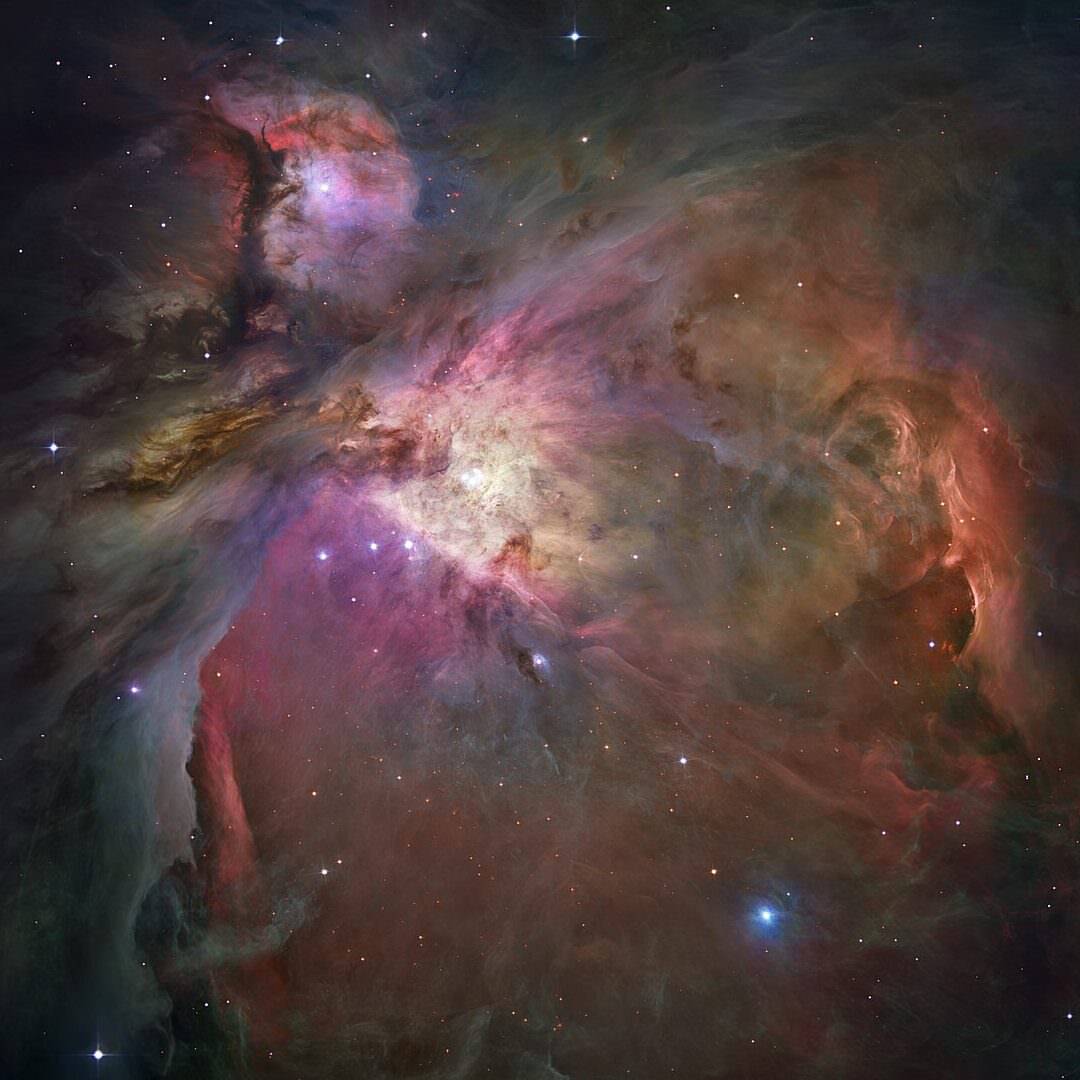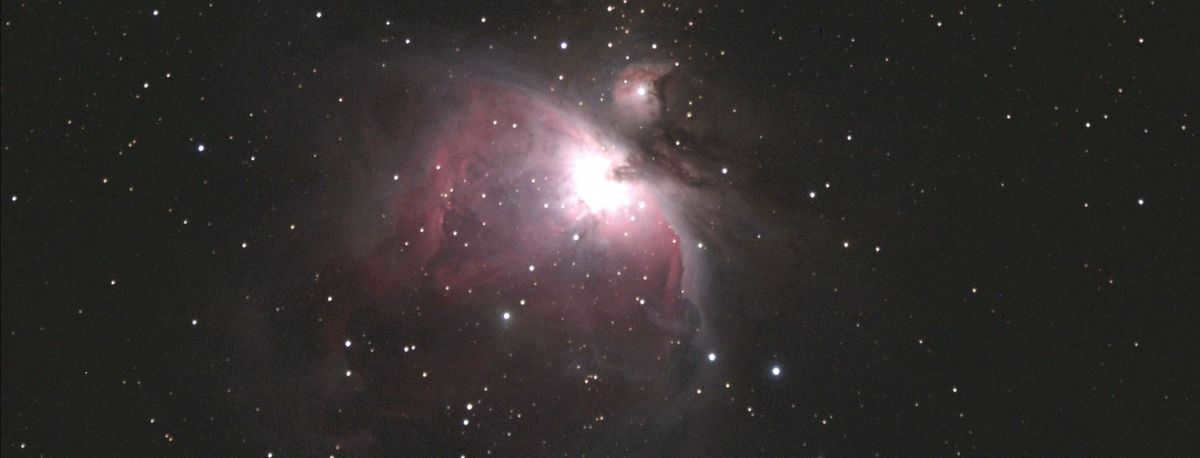
There are numerous extraordinary destinations in the cosmos. One of these remarkable places is the Orion Nebula, which serves as the birthplace of stars. It is undeniably a captivating sight for astronomy enthusiasts.
Description of M42
The Orion Nebula, also known as M42, can be found in the constellation of the same name, just below Orion’s belt. It consists of gas that emits a vibrant glow due to the intense ultraviolet radiation and houses recently formed, hot luminous bodies. It serves as a sanctuary for numerous young stars. This nebula happens to be the closest star cluster to the sun, essentially acting as a stellar nursery.
Within this celestial body, you can find protostars, and even protoplanetary disks. Some of these budding systems will eventually give rise to planets, while others will be expelled by the gravitational forces of planet-forming materials, such as dust and gas.
The configuration of Orion resembles the figure of an hourglass. The most luminous celestial bodies in this area are Betelgeuse and Rigel. Orion’s belt consists of a trio of stars: Alnitak, Mintaka, and Alnilam.
Discovery Background
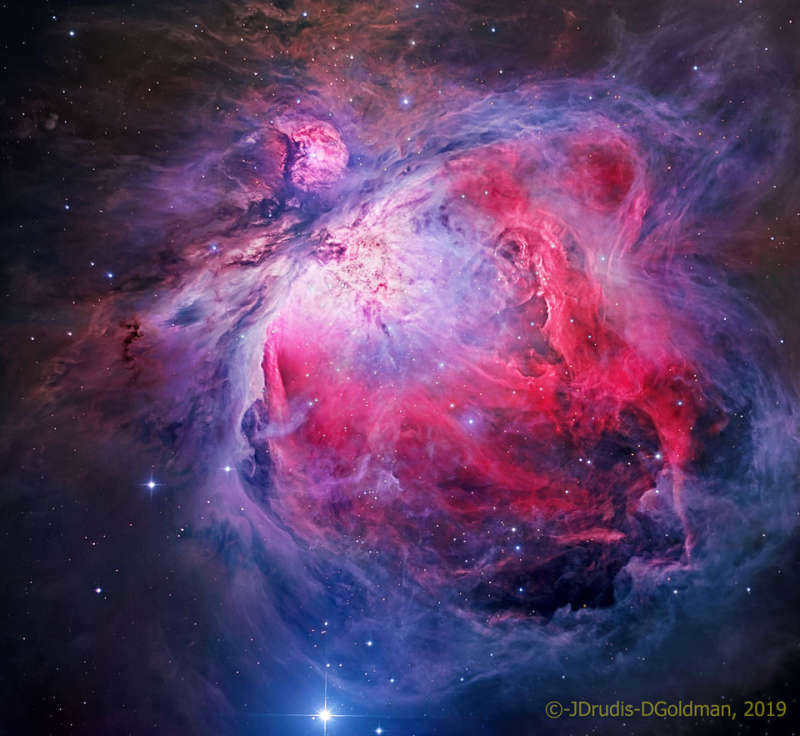
The ancient Maya were aware of the existence of the nebula, with references dating back to ancient times. As early as 130 BC, Ptolemy discovered the first star in the region of the sky where the nebula is located. Later, Galileo also observed three stars in the same area, however, they did not realize the presence of the nebula surrounding them.
It wasn’t until the early 17th century that the Orion Nebula was officially described. Frenchman Nicolas-Claude Fabry de Peyresque is credited with this discovery, as he accurately identified the true nature of the nebula in 1610. During the mid-17th century, the nebula was sketched and assigned the catalog number M42.
Characterization
The current state of the nebula is characterized by the presence of two immense clouds known as Orion A and Orion B. These clouds encompass a vast and substantial portion of the constellation from which they derive their name.

Scientists have discovered that the Orion Nebula possesses the following characteristics:
- Situated at a distance of 1,344 light-years away from our planet.
- It measures 33 light-years in diameter.
- The mass of the nebula is approximately 2 thousand times greater than that of the Sun.
- The core temperature of the nebula exceeds 9000 0 C.
- It has an angular size of 80×60.
- The stellar magnitude visible to the naked eye is +4.0.
The innate curiosity of humanity to explore the universe is an inherent characteristic of mankind. It captivates us with its boundless allure and enigma. Of particular fascination are the nebulae – the most exquisite entities in the nocturnal expanse. Comprised of clusters of interstellar dust, gas, and plasma that both absorb and emit light, nebulae serve a crucial purpose in fostering the star cycle. Among the most resplendent and unparalleled is the Orion Nebula, also known as M42.
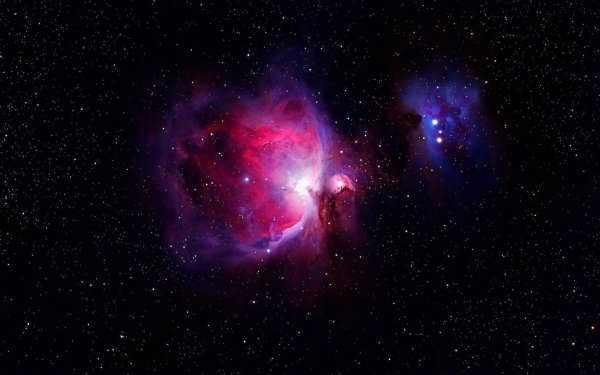
Key Features of the Object
The Orion Nebula is the most brilliant nebula in existence. It is observable at night without the need for specialized equipment, making it visible from virtually any location on the planet. It falls into the category of diffuse nebulas.
The crimson-hued sections of the nebula are generated by heated hydrogen. The blue regions are produced by dust particles reflecting the radiance of bluish stars. The green areas emerge as a consequence of the presence of specific chemical elements. The violet color arises from the reflected radiation emitted by the enormous stars situated at the core of the nebula. It encompasses a vast assortment of stars, along with dust and gas. Scientists have identified 700 stars within the nebula, which can be observed in photographs captured by the Hubble telescope.
M42 is a prominent feature of a vast complex of celestial clouds situated in the Orion constellation. This expansive cosmic cloud serves as one of the most renowned entities and is easily observable during the winter season.
Placement
Positioned slightly below Orion’s belt, the nebula resides at a distance of 1300 light years from our planet. M42 takes on the form of a cocoon, harboring a multitude of stars within its confines. Additionally, it shares its vicinity with M43, which assumes a circular shape and is separated by a dark band of dust. On the left side, a dust cloud can be found, reflecting the luminosity emitted by the stars.
M42, also known as the Great Orion Nebula, is an example of a diffuse nebula that does not have its own energy source, unlike stars. Instead, the glow within M42 is caused by the presence of hot stars that are either located within or close to it. Interestingly, the matter that makes up the Great Orion Nebula is different from the matter that makes up these stars.
The dominant red color of M42 is a result of the abundance of hydrogen within it. However, there are also hints of blue and green hues present, indicating the presence of other elements such as helium, nitrogen, heavy metals, sulfur, and oxygen.
At the heart of M42, there are four blue-colored stars that create the shape of a trapezoid. Each star emits its own unique light, which is then absorbed and reflected by the surrounding matter, resulting in a display of various colors.
Within M42, there are also dust clouds that form fiber-like structures, as well as leaf and bubble shapes. These clouds are influenced by powerful stellar winds, which cause them to take on curved shapes and alter their appearance.
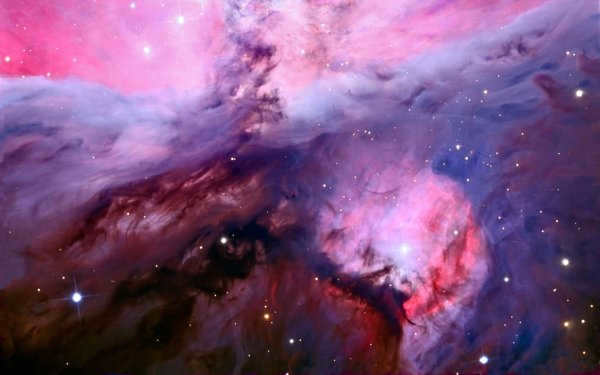
- Hydrogen is being ionized;
- Oxygen is present;
- Sulfur is found;
- Nitrogen is present;
- Heavy metals are present;
- Helium is present.
The Formation of M42
M42 was created as a result of the gravitational collapse affecting particles in the interstellar medium. Due to gravity, matter began to come together and form regions of high density. Stars began to form in the center, and the ultraviolet light they emit interacts with the surrounding gas and dust particles, giving rise to the appearance of a nebula.
Current studies
In order to fully observe the celestial object, scientists require the use of equipment that enables them to view light at various wavelengths. Hence, the M42 nebula was observed using the APEX telescope, which is equipped with a submillimeter camera and is situated at an elevation of 5 thousand meters above sea level.
The APEX telescope is located in Chile and allows for the exploration of what lies within and beyond the clouds of gas and dust that compose the nebula, facilitating the observation of stellar formation processes.
Based on the research, scientists have determined that two massive clusters of stars exist in front of the M42 nebula and function as distinct formations. These clusters encompass approximately 2 thousand stars. Furthermore, the investigation has led to the discovery of another cosmic cloud composed of molecular hydrogen.
Research conducted in the infrared spectrum has revealed that the presence of dust surrounding the Orion Nebula has a dampening effect on the luminosity of the stars.
The utilization of an infrared telescope enables the observation of stars and the monitoring of variations in their luminosity. The nebula’s shape is influenced by the radiation emitted by the stars as well as the stellar wind. This particular type of telescope aids scientists in conducting more comprehensive studies of celestial objects.
Did you know?
- The Orion Nebula, also known as M42, has been observed since ancient times and was even mentioned in the Mayan culture.
- In 130 BC, Ptolemy discovered a bright star within the Orion Nebula. This star, later named Theta Orion, was also observed by Tycho Brahe in the 16th century and Johann Bayer in the 17th century.
- In the 17th century, Galileo observed three bright stars in the Orion Nebula, but did not notice the surrounding nebulae.
- M42 was first discovered in 1610 by Johann Baptiste Cisat. In 1656, Christian Huygens provided a sketch of M42, and in 1865, William Haggis determined that it is composed of gas. Finally, in 1880, the Orion Nebula was photographed for the first time by Henry Draper using an 11-inch refractor.
- Astronomers have been exploring the Orion Nebula for the whereabouts of a protostar. After conducting multiple surveys, they have discovered 15 entities that are classified as the most nascent protostars.
- M42 captivates the interest of numerous astrophotographers. Nevertheless, one can capture its imagery without the need for a telescope. All that is required is a camera equipped with a telephoto lens.
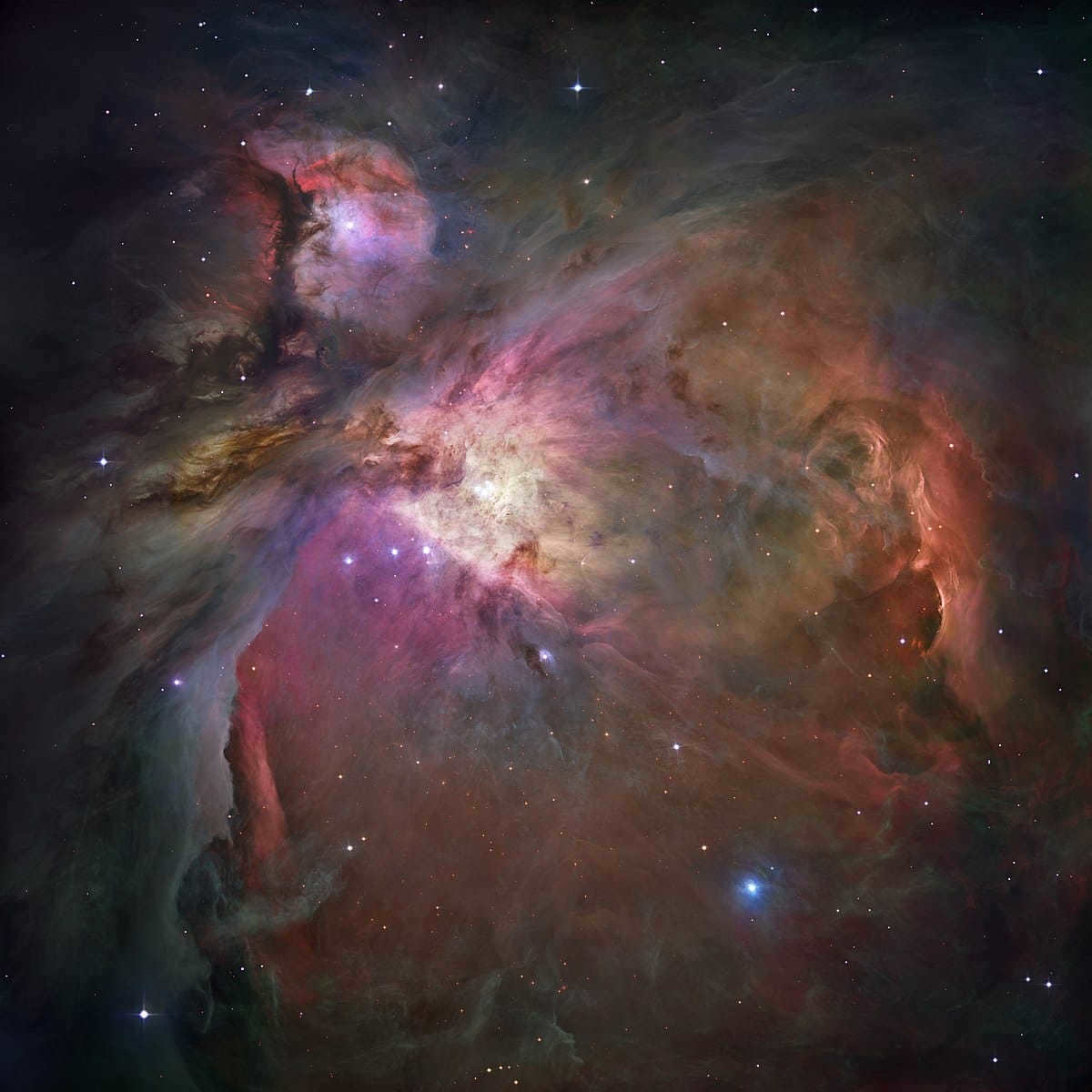
The Orion Nebula, also known as M42, is a stunning emission nebula that features a distinctive butterfly-shaped center. Situated in the southern region of the Orion constellation, this celestial wonder can be easily observed with the naked eye as a faint, yet captivating, white spot positioned in the center of Orion’s belt.
Within this article, we will delve into the various characteristics, origin, and significance of the Orion Nebula.
Main features
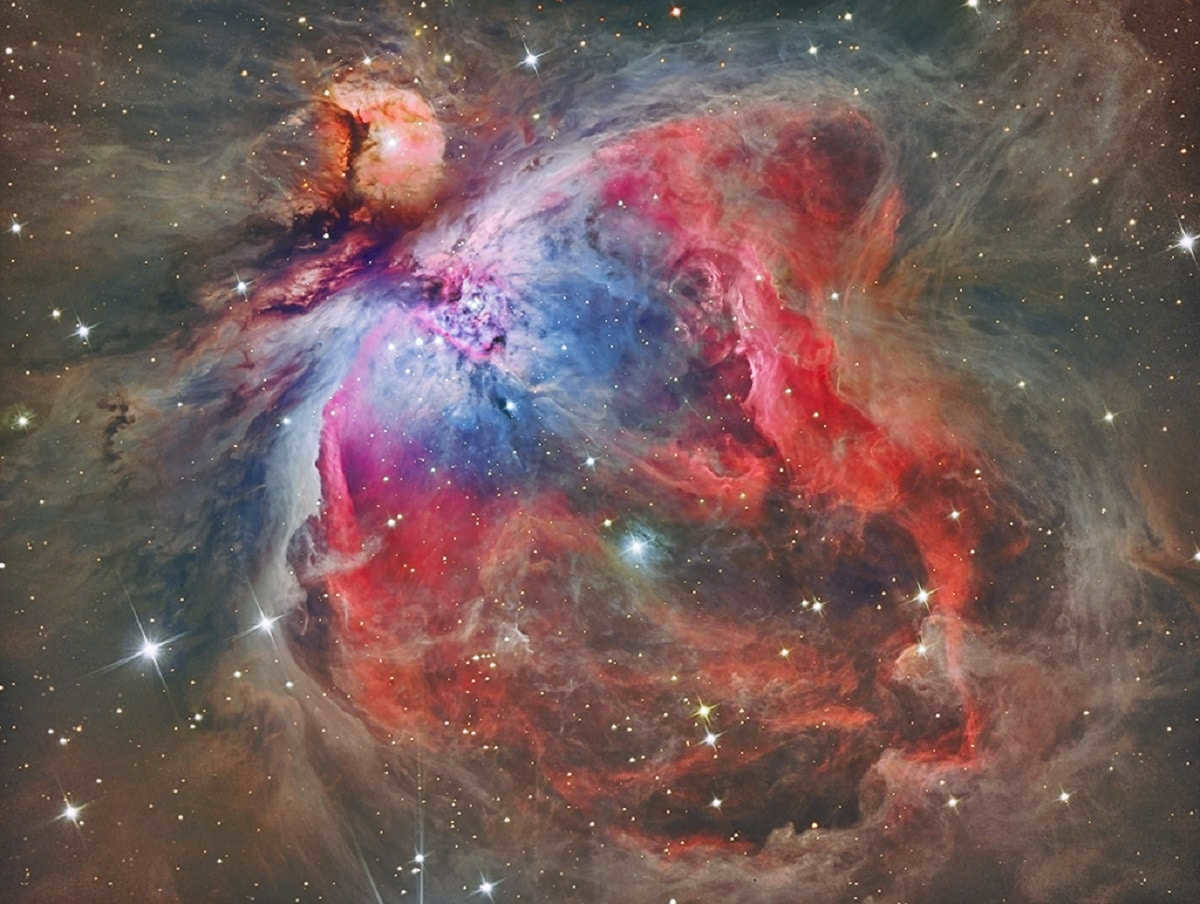
Nebulae, which are named after their diffuse shape, are expansive regions of space that are filled with interstellar matter, including dust and gas. The first recorded mention of the Orion Nebula was made by French astronomer Nicolas-Claude Fabry de Peyresque in 1610, although ancient civilizations like the Maya also documented similar celestial objects. However, it cannot be definitively proven that the nebula observed in ancient times is the same as the one known as the Orion Nebula today.
Interestingly, Galileo, despite exploring the area with a telescope, did not mention the Orion Nebula specifically. He did, however, observe a cluster of stars within the nebula known as the Trapezium. Other renowned astronomers from antiquity also made observations of this region.
Given that the Orion Nebula is now easily visible to the naked eye, it is possible that the illumination of new stars contributed to its increased visibility. The nebula was officially cataloged as object M42 by Charles Messier in 1771, and it can also be located using this designation on various web and mobile astronomy applications.
From an astronomical perspective, nebulae such as Orion hold great significance. Their significance lies in the continuous formation of stars within them. It is within these nebulae that the force of gravity causes matter to cluster together, eventually condensing to give rise to the early stages of star systems. Stars are consistently being formed within these nebulae.
Position of the Orion Nebula
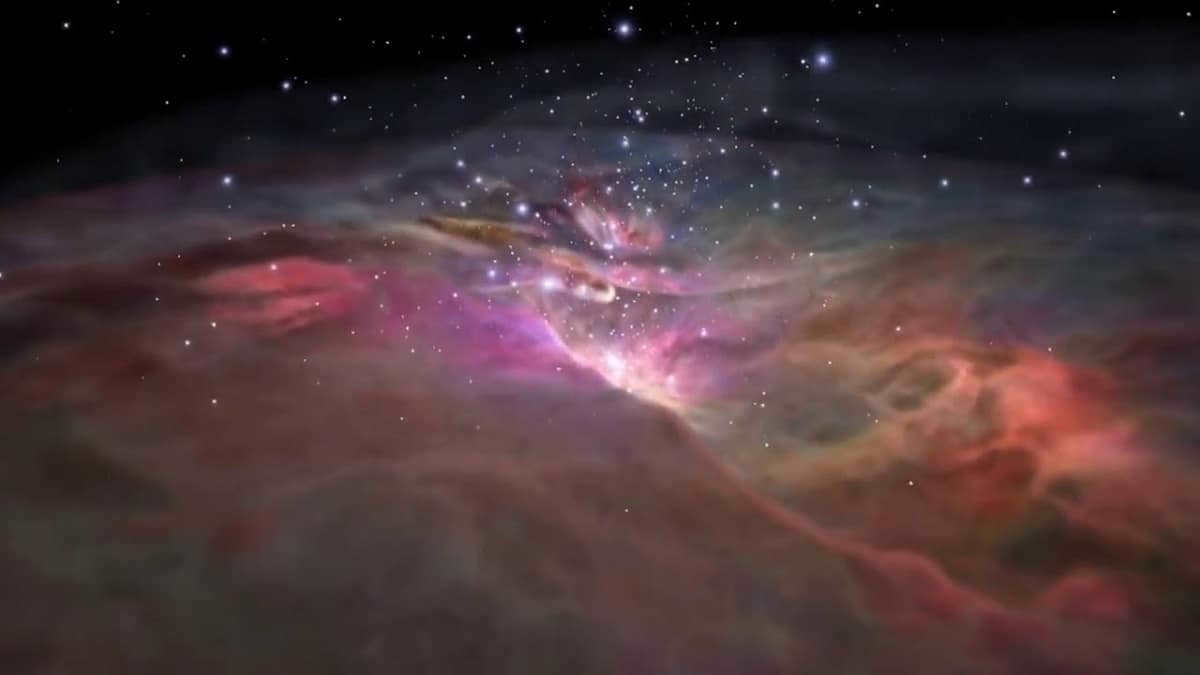
The Orion Nebula can be seen in the night sky at a distance of 500 parsecs, which is equivalent to 1,270 light years. This celestial object is situated in the region known as Orion’s Belt, which is formed by three prominent stars arranged in a diagonal pattern within the quadrilateral-shaped constellation.
The names of these three stars are Mintaka, Alnilam, and Alnitak, although they are also commonly referred to as the Three Marys or the Three Wise Men.
By comparing the distance, you can gain a sense of the size and true brightness of the nebula: 1,270 light years = 1.2 x 1016 km, whereas Venus is only 40 x 106 km away from Earth.
What is the process for observing the Orion Nebula?
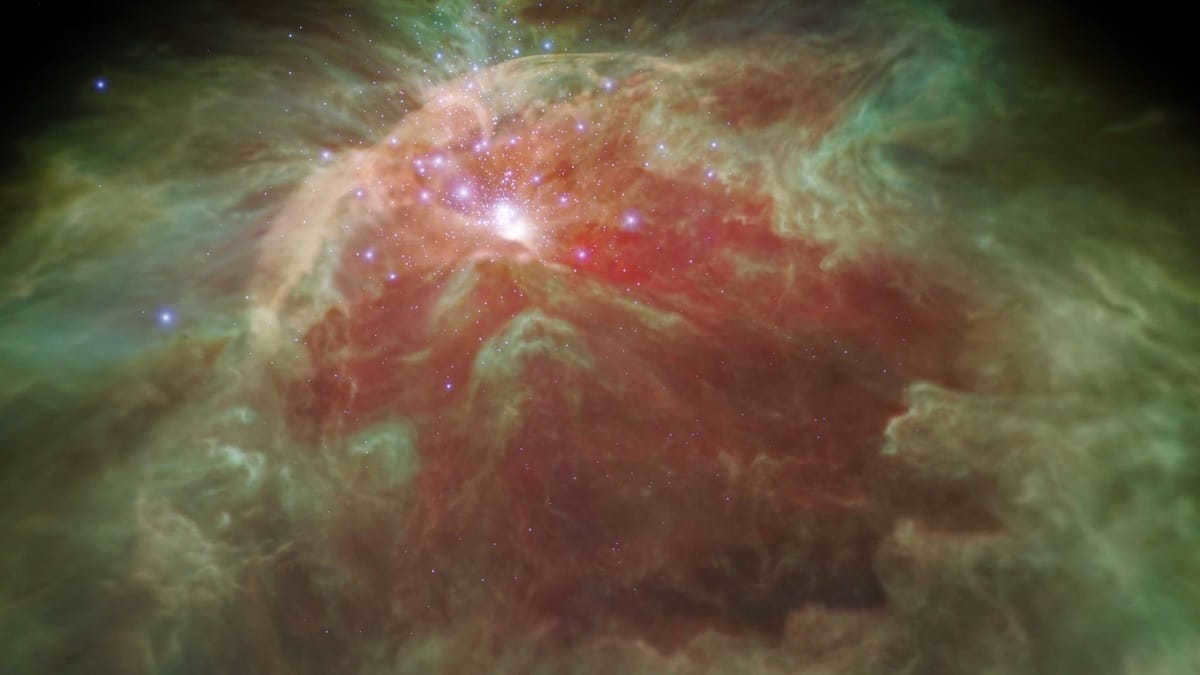
The Orion Nebula is classified as an emission nebula, meaning that it emits light within the visible light spectrum. It can be observed in the eastern sky shortly after sunrise in the month of July, although the optimal viewing time is during the winter for those in the northern hemisphere and the summer for those in the southern hemisphere.
If the sky is sufficiently dark and clear, it is possible to see the Orion Nebula with the naked eye. However, it is advisable to minimize light pollution by venturing away from densely populated areas. When viewed through binoculars or a small telescope, the nebula appears as a small, pearly spot, occasionally exhibiting a subtle pink hue. This occurrence is not particularly common, as the human eye is not as sensitive to color as photographic film.
Large telescopes or long exposure photos are necessary to observe it, and these images are often edited to enhance the details.
However, even with binoculars, a nebula is an incredibly stunning sight, especially when you consider the stars being born within it at that exact moment.
As previously mentioned, locating the nebula is not difficult, as Orion is one of the most well-known constellations. Additionally, apps such as Sky Map can immediately show you your location. Modern telescopes also have the capability to automatically focus and position a trapezoid within the finder.
Discovery and Origin
According to various accounts, the ancient Mayans would have observed the area in the sky where this nebula is located, which they referred to as Shibalba. They believed that this gas cloud provided evidence of the forge of creation.
The exploration of the Orion Nebula began in 1610 when Frenchman Nicolas-Claude Fabry de Peyresque and Jesuit astronomer Cisat de Lucerne made its discovery. It was later included in Charles Messier’s Astronomical Catalog in 1771, earning the designation M42.
Thanks to William Huggins’ spectroscopy, the detection of his indistinct signature did not occur until 1865. Furthermore, in 1880, Henry Draper published Huggins’ initial astrophotograph. The Hubble Space Telescope provided the initial direct observation of the nebula in 1993, and as a result of its continuous observations, subsequent three-dimensional models have been developed.
The nebula may appear white to the naked eye, but occasionally, in specific circumstances, it can exhibit a faint pink hue that is discernible by human observers. The true colors of the nebula are revealed in long-exposure images, as they originate from the energy released by excited gas molecules.
Indeed, the stars within the nebula have a temperature of approximately 25,000 K. Consequently, they emit sufficient ultraviolet radiation to ionize the hydrogen gas, which constitutes the primary element in this region.
The pink color that characterizes the nebula arises from the combination of wavelengths (red, blue, and violet) emitted by the excited gas molecules. Additionally, certain images display green areas that result from specific energy transitions that can only occur in regions with the nebula’s unique physical conditions.
The Orion Nebula is astronomically significant due to the high level of activity among its stars. It contains a multitude of stars that are currently forming, which are known as protostars.
Due to its relatively short lifespan as a star, locating protostars for study is a challenging task. Additionally, the Orion Nebula’s distance from the Milky Way’s plane makes it easier to distinguish its contents from other celestial objects. As a result, astronomers and astrophysicists extensively research this nebula.
By familiarizing yourself with this information, you can gain a deeper understanding of the Orion Nebula and its unique characteristics.
This article adheres to our editorial ethics guidelines. To report any errors, please click here.
Full Article Summary: Network Meteorology “astronomy” Orion Nebula
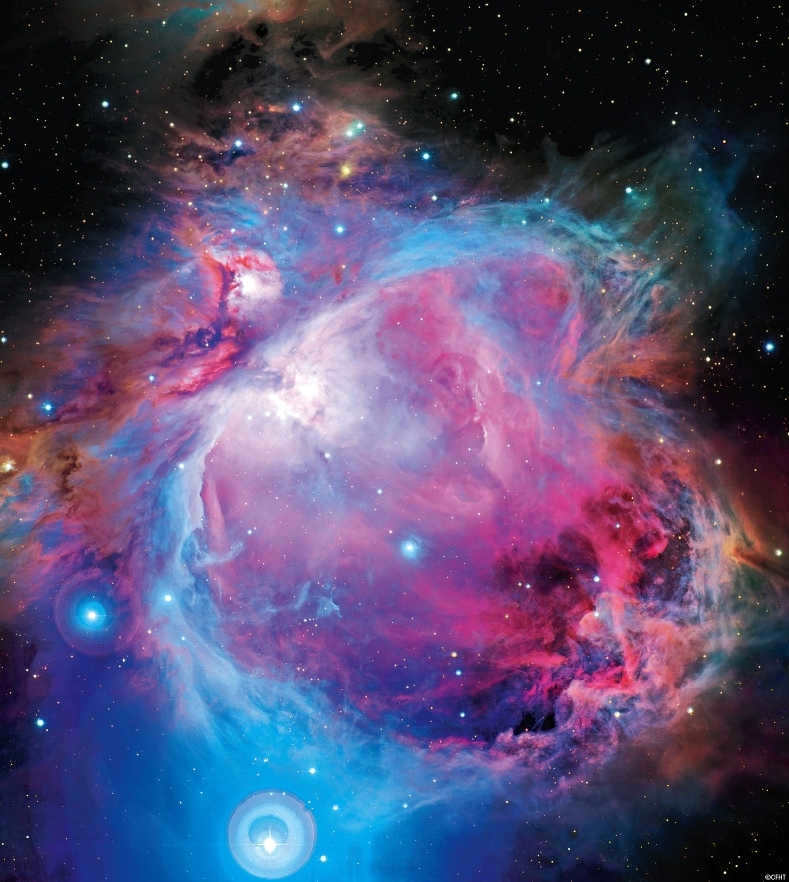
The Orion Nebula (M42, NGC1976) is a well-known and prominent nebula located in the constellation of Orion. It is widely recognized as one of the most brilliant nebulae in the night sky.
Overview
The Orion Nebula is a notable star-forming region that is situated closest to Earth. It harbors numerous young planetary systems comprised of gas and dust. Within M42, astronomers have identified approximately 700 stars that are presently undergoing formation. This panoramic image, captured by the Hubble telescope, showcases these protostars in all their splendor.
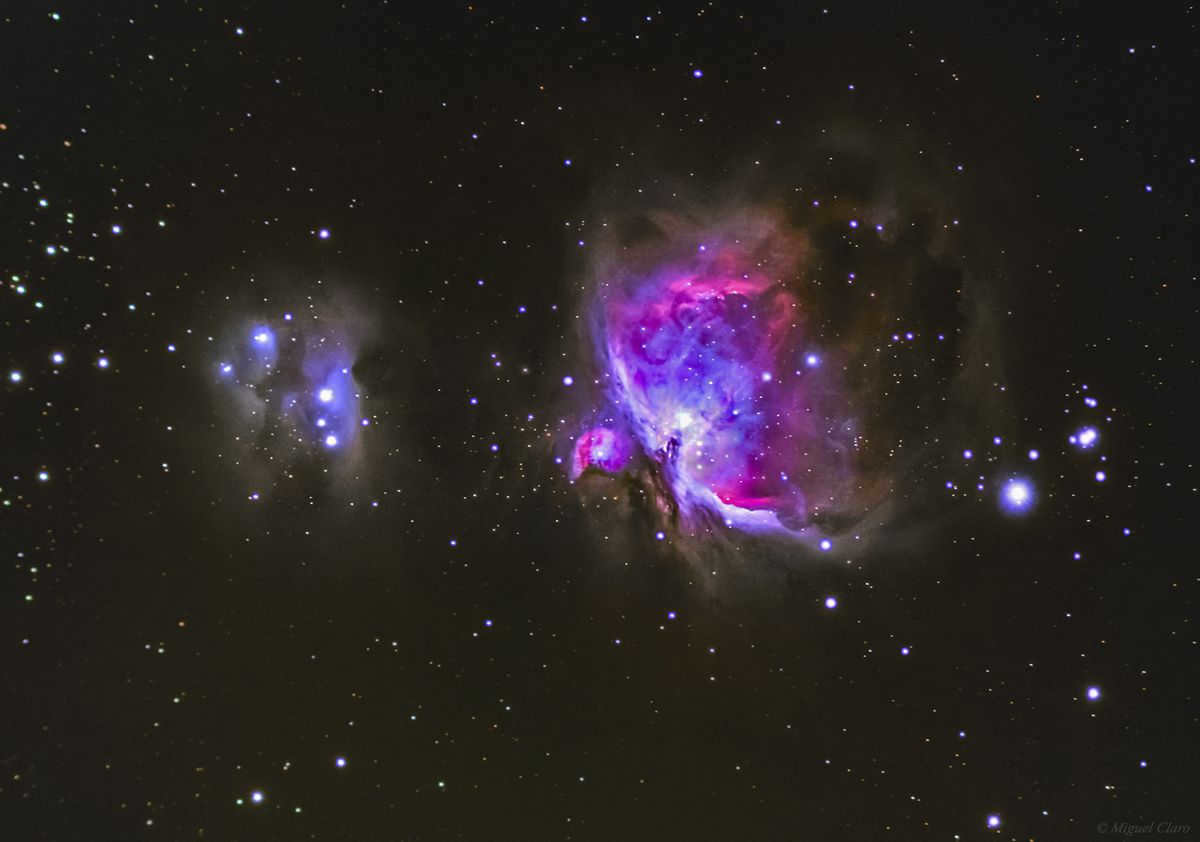
This stunning photograph was captured in Serra de Aire, a picturesque location in Portugal. The skilled photographer, Miguel Claro, used a Canon 60Da camera with ISO 2500 and an exposure time of 21 seconds at an aperture of F/7. To enhance the image, a focal length of 570mm + Astro Professional ED 80 lens was utilized. The final result is a mesmerizing composition created by combining 51 individual frames in the Maxima DL 5 program.
The Orion Nebula is a diffuse nebula. The red regions in the nebula in visible range images are created by hot gas, predominantly composed of hydrogen. The blue regions consist of dust particles that reflect the light emitted by hot blue stars. The reddish hue is a result of recombination in the Hα emission line, which has a wavelength of 656.3 nm. The blue-violet coloration represents the reflected emission from the massive O-class stars located at the center of the nebula. M42 is a component of a significantly larger complex of molecular clouds situated in the Orion constellation, which also includes M78 and the Horsehead Nebula.
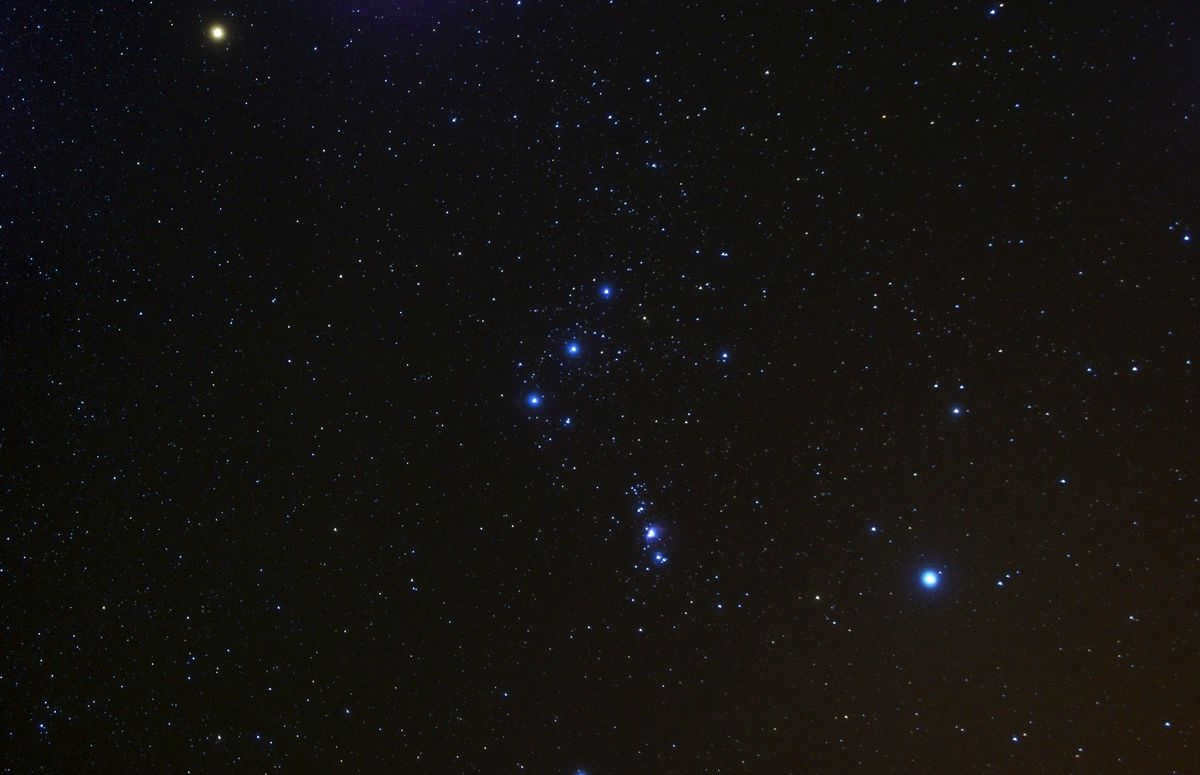
The trio of stars Alnitak (ζ Orionis), Alnilam (ε Orionis), and Mintaka (δ Orionis) at the heart of Orion are known as Orion’s Belt
The Great Orion Nebula can be easily spotted without the aid of a telescope, as it shines with a brightness of magnitude 4. It is positioned roughly 1,500 light years away from our planet. M42 has a diameter of approximately 30 light years and serves as a massive cocoon where numerous stars are born.
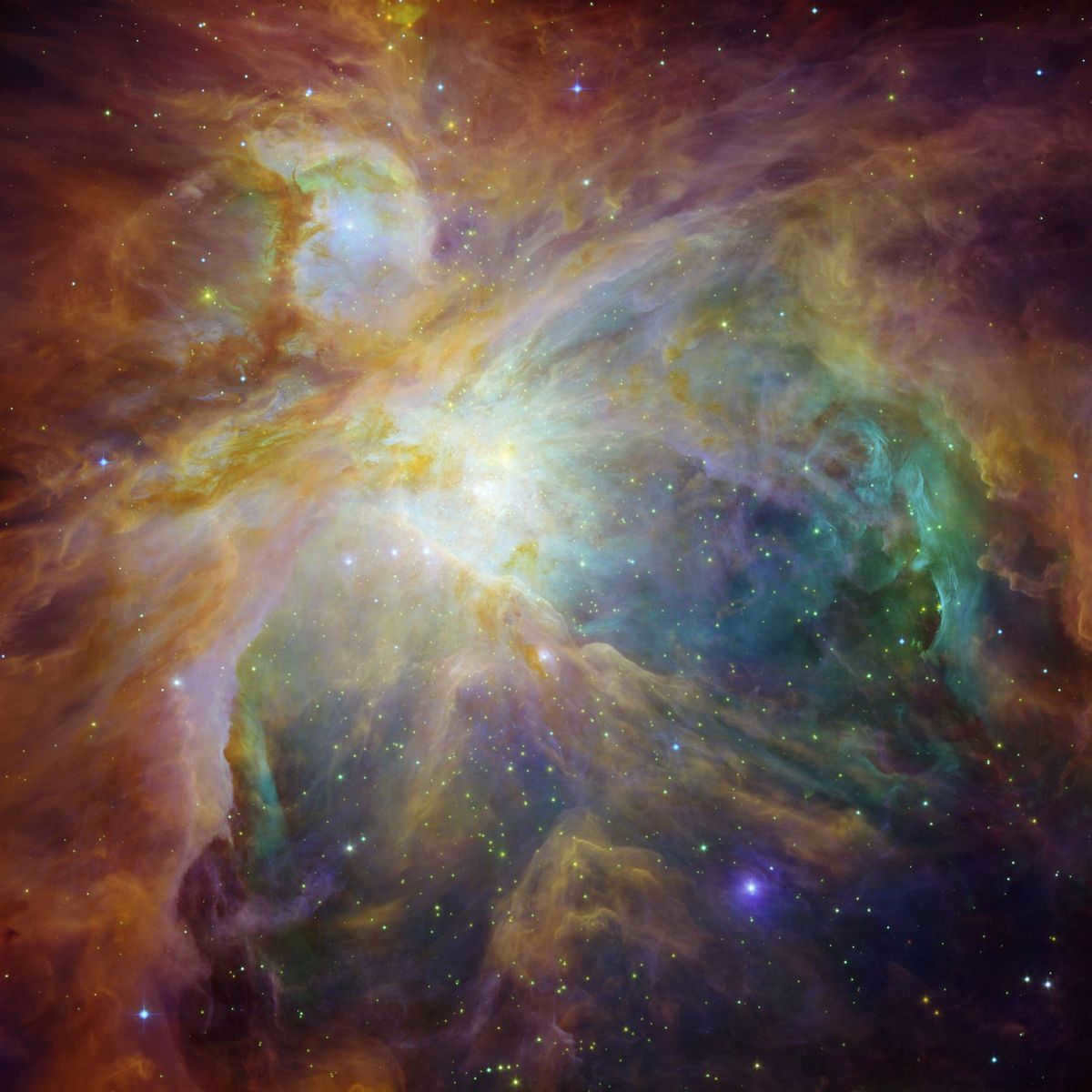
M42: a photograph captured using infrared, ultraviolet, and visible light.
Physically, a component of the Orion Nebula is the M43 nebula, which appears to be slightly separated from M42 by a dark strip of dust. A cloud of interstellar dust can be seen near the left side of M42, reflecting light emitted by young, hot stars. This cloud is made up of three distinct areas known as NGC 1977, NGC 1975, and NGC 1973.
A collection of pictures showcasing the nebula
Exploring M42
It is a challenging task to accurately determine distances in outer space, particularly in certain regions of our Milky Way galaxy. Even stars that appear close in proximity can actually be separated by vast distances of hundreds or thousands of light-years. Measuring these distances accurately from our vantage point on Earth is especially problematic.
In a recent study, researchers utilized a 340-megapixel camera affixed to the CFHT, also known as the Canada-France-Hawaii Telescope, to conduct an in-depth examination of the star-forming area commonly referred to as M42.
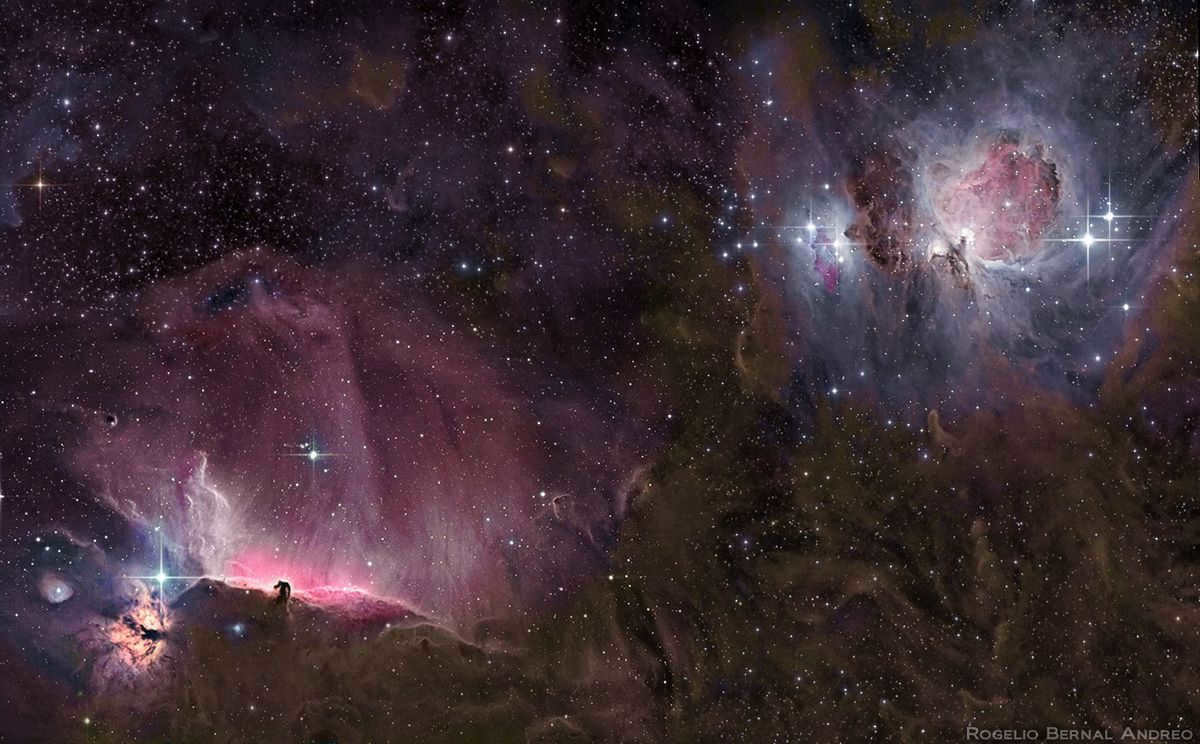
An image captured on Earth using a prolonged exposure
According to scientific research, the Orion nebula’s two prominent star clusters are positioned in front of it and are distinct formations. While M42 can be easily seen with the naked eye, its true nature was not fully understood until the invention of the first telescopes in 1610. Situated approximately 1500 light-years away, it is an expansive and dynamic region where stars are continuously forming. The diverse array of stars within the nebula provides astronomers with a valuable reference point for studying various aspects of star formation.
A recent study conducted by the European Space Center for Astronomy (ESAC) has revealed that the NGC 1980 star cluster, containing around 2,000 stars, is situated in front of the nebula and is separate from it.
It was discovered that M42 had a multitude of fascinating surprises.
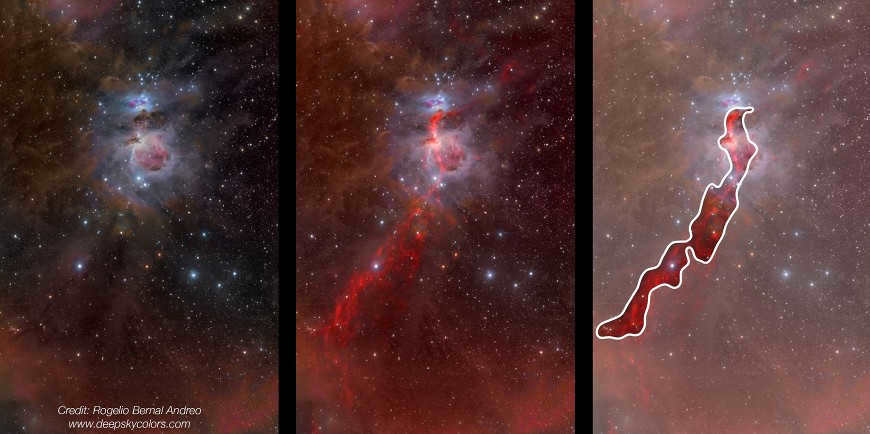
Furthermore, the CFHT observations were merged with previous investigations carried out by Herschel, Spitzer, WISE, and XMM-Newton, resulting in the identification of an additional molecular hydrogen cloud known as L1641W.
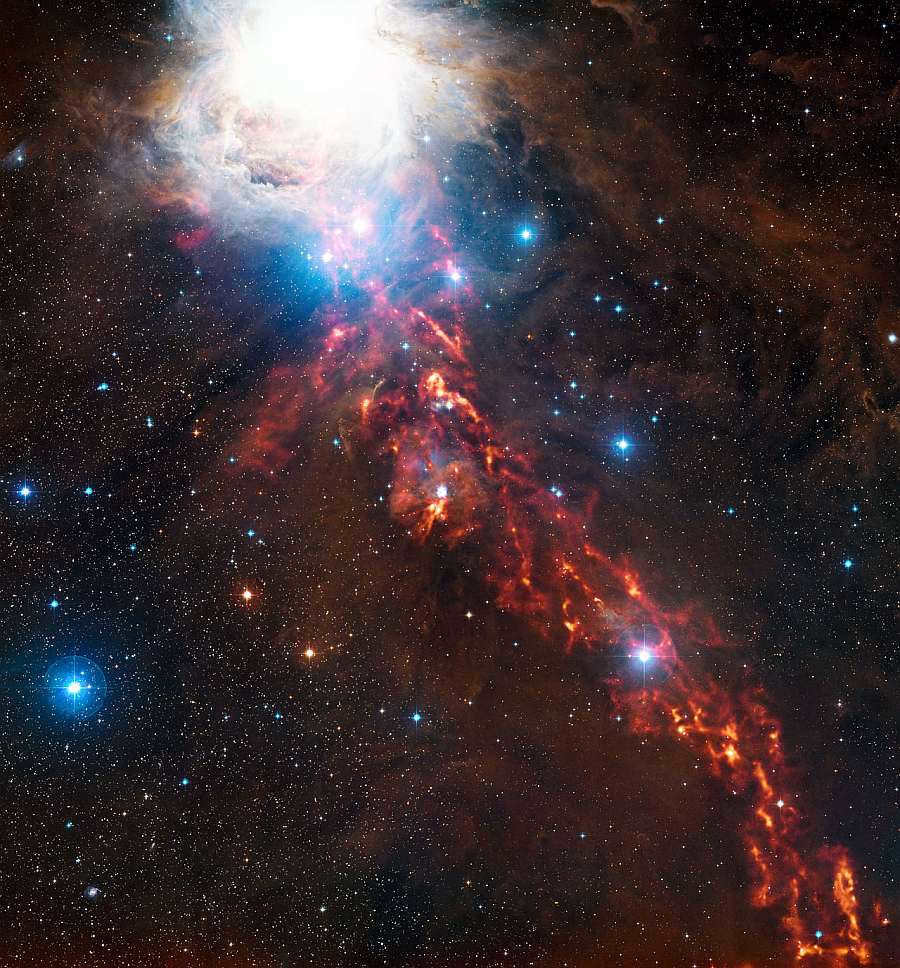
A stunning new photo of a celestial cloud in the Orion constellation appears like a fiery ribbon in the heavens. The hues of orange depict the subtle glow emanated by icy particles of interstellar dust.
The process of making these observations
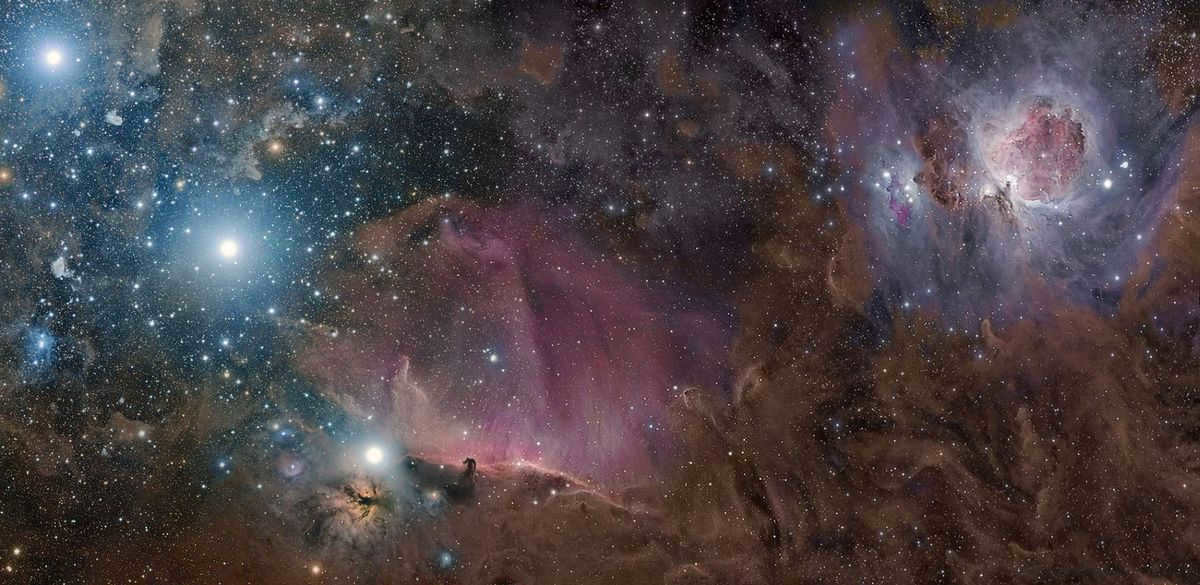
The APEX (Atacama Pathfinder Experiment) telescope, situated in Chile, was utilized for the observations.
Gas and dust clouds serve as the building blocks of stars. However, these minute dust particles create a barrier that hinders our ability to perceive what lies within and behind these clouds in visible light, thus making it challenging to study the processes of star formation.
Consequently, astronomers must employ instruments capable of detecting other wavelengths of light. At submillimeter wavelengths, dust particles emit a glow due to their temperature being a few tens of degrees above absolute zero.
The APEX telescope, equipped with a submillimeter camera, is situated at an altitude of 5000 meters above sea level, making it the perfect tool for conducting these types of observations.
This stunning new image captures only a fraction of the vast Orion Molecular Cloud complex, found in the constellation bearing the same name. Comprised of a diverse array of luminous nebulae, youthful hot stars, and frigid dust clouds… This expansive region stretches across hundreds of light-years and is positioned approximately 1350 light-years distant.
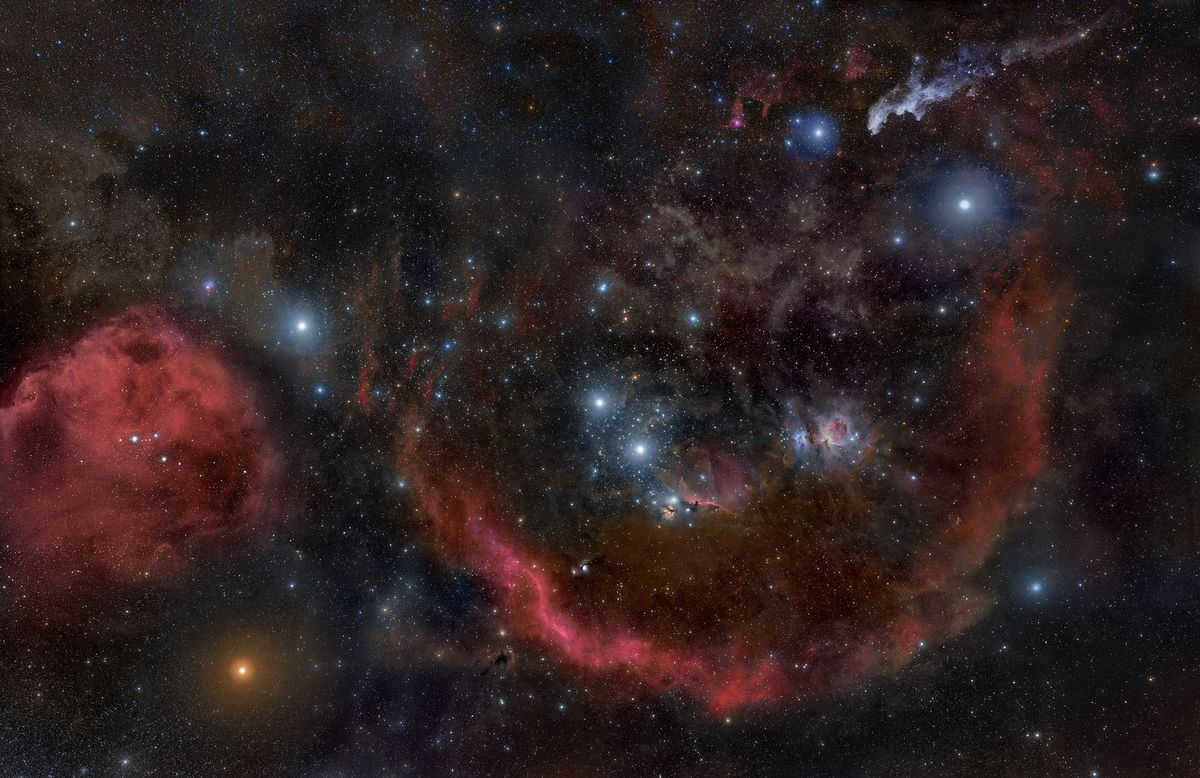
A stitched panorama composed of 32 images showcases the surrounding area of the Orion Nebula.
Formation of stars within the nebula
The Orion Nebula, known as M42, can be observed with the naked eye in the constellation of Orion. It appears as a prominent feature in the middle of Orion’s “sword”. This region serves as the brightest segment within an expansive celestial nursery, where new stars come into existence. Furthermore, it represents the closest site of star formation to Earth.
The gravitational compression and the effects of stellar winds give rise to the formation of captivating fibrous structures within these dust clouds. These structures take on shapes resembling leaves and bubbles.
The gusts of wind that you observe in the image are actually gas streams that have been expelled from the atmospheres of stars. These streams are so strong that they can actually alter the shape of the surrounding clouds, giving them the sinuous appearance you see in the picture.
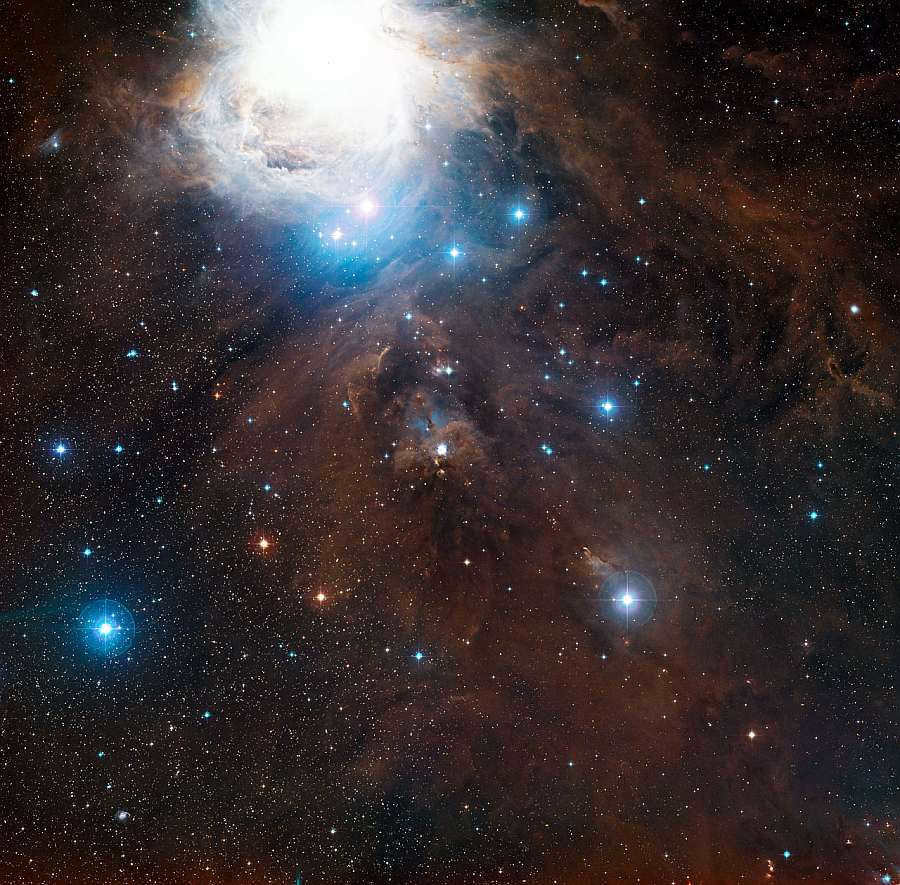
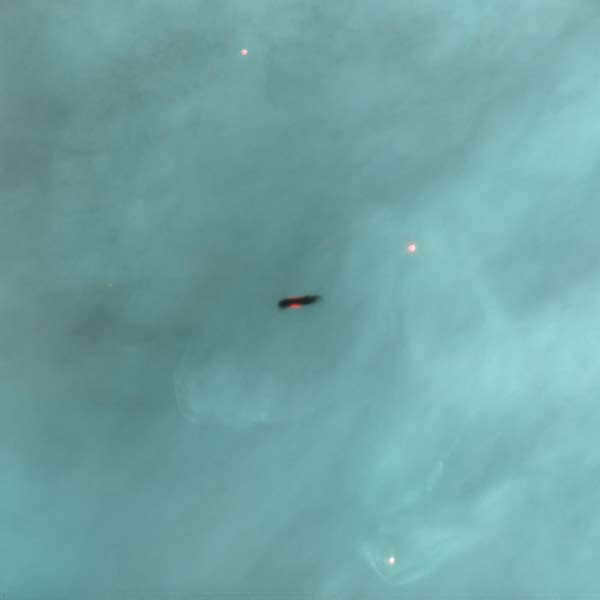
The emerging solar system
Astronomers have utilized this information and other data obtained from APEX in conjunction with imagery from the Herschel Space Observatory to investigate the constellation Orion for the whereabouts of a protostar – specifically, an early phase of star formation.
Thus far, they have successfully pinpointed 15 entities that exhibit significantly greater brightness at longer wavelengths of light as opposed to shorter wavelengths.
These recently uncovered exceptional entities are highly likely to be some of the most youthful protostars ever discovered, bringing astronomers even closer to the precise moment of star formation.
A fresh image of the celestial cloud
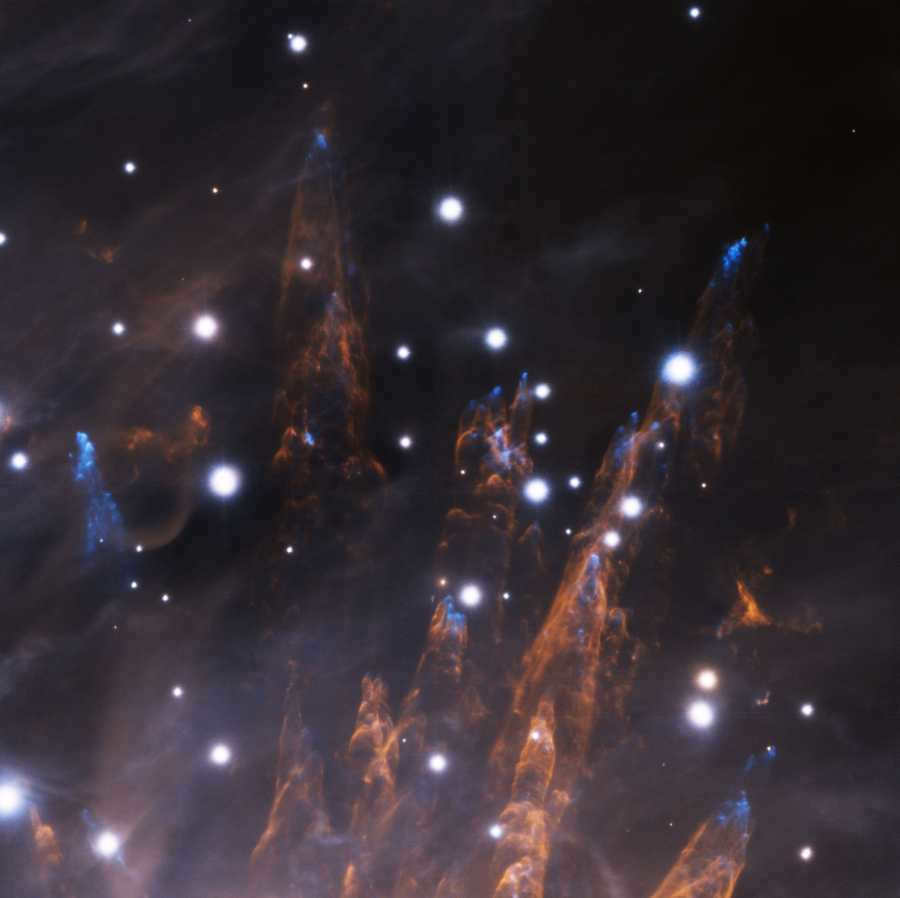

The Gemini telescope has recently utilized its advanced adaptive optics system to capture the stunning photograph displayed above.
Within this new image, one can observe streams of interstellar gas in a vibrant blue hue, resembling peculiar projectiles propelled at supersonic velocities from the vicinity of a region where massive stars are forming.
These unique projectiles traverse through clusters of neutral hydrogen, causing it to heat up and subsequently form towering pillars.
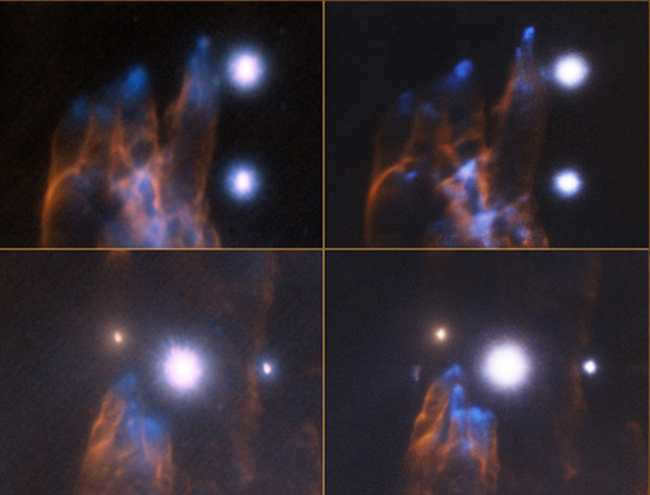
The Advantages of Adaptive Optics
The use of optics with a wide field of view (85 angular seconds across) demonstrates the remarkable efficiency and uniform correction capabilities of the system.
By employing a constellation of five laser reference stars in conjunction with multiple deformable mirrors, the field of adaptive optics in astronomy has been significantly improved. The installation of this groundbreaking system at the Gemini Telescope in Chile marks the first time that multiple laser reference stars have been utilized in this manner.
Photos taken by the Hubble Telescope
When looking at the M42 through the powerful lenses of the Hubble telescope, you can witness the awe-inspiring beauty of protoplanetary star systems.
The Spitzer Telescope’s Glimpse of a Nebula
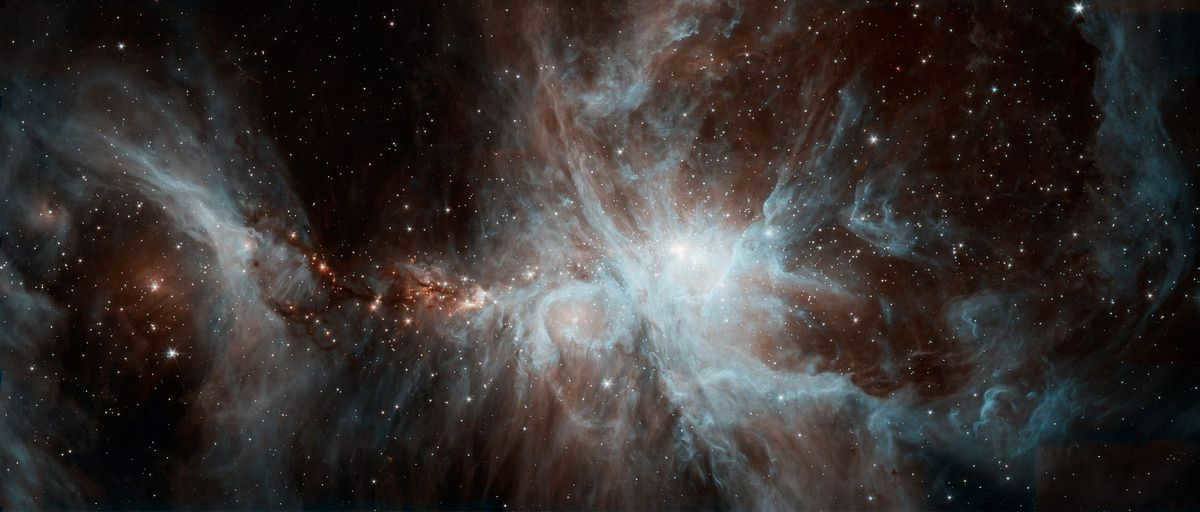
Nebula captured by the Spitzer telescope
NASA’s Spitzer telescope has recently captured a stunning image of a cluster of vibrant, youthful stars in this breathtaking cosmic landscape.
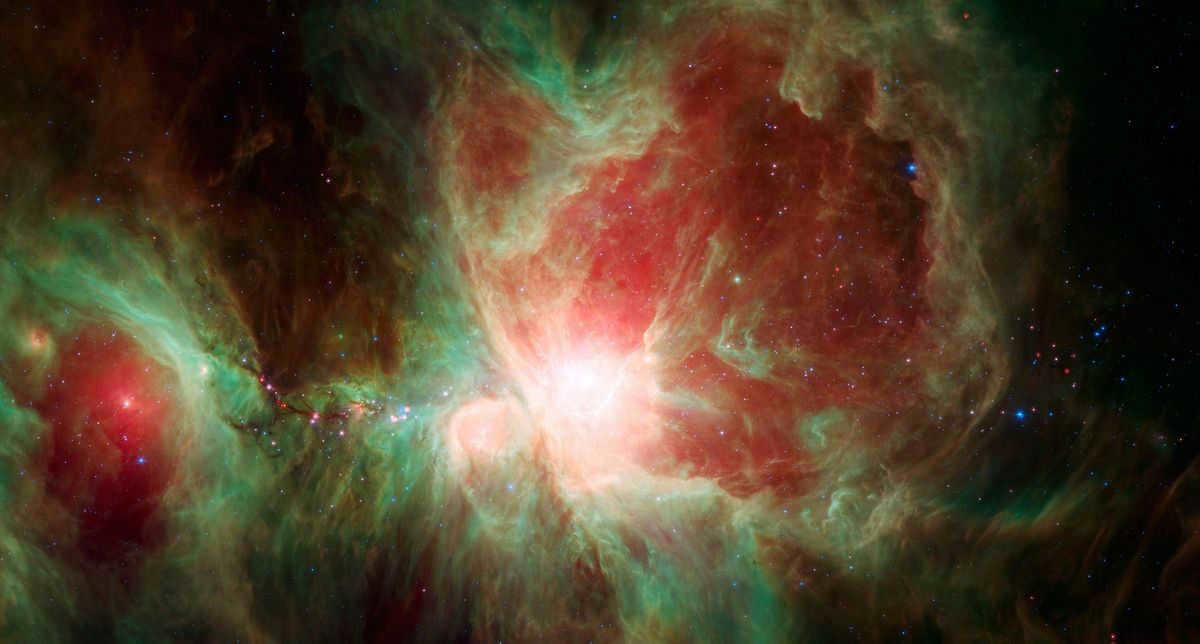
The periodic fluctuations in luminosity detected by the Spitzer telescope can be attributed to a range of factors. These include the emergence of both cold and hot regions on the surface of the star, which in turn affect its overall brightness.
The benefits of studying in the infrared spectrum
The presence of dusty material surrounding the nebula can diminish the star’s brightness. However, an infrared telescope can effectively monitor these stars and provide data on their changing brightness. The trapezoid region is known for hosting the hottest stars, including the bright spot observed at the center of this image. The radiation and stellar wind emitted by these stars shape the surrounding nebula.
Spitzer captured this photo after all the coolant had vaporized in May 2009, marking the beginning of a new “warm” mission. The infrared telescope’s light spans across the 3.6-micron (blue) and 4.5-micron (orange) bands, enabling detailed observations.
High-resolution photo of the Orion Nebula captured by the Vista telescope of ESO
Discovering the location of the Orion Nebula
Locating the Orion Nebula
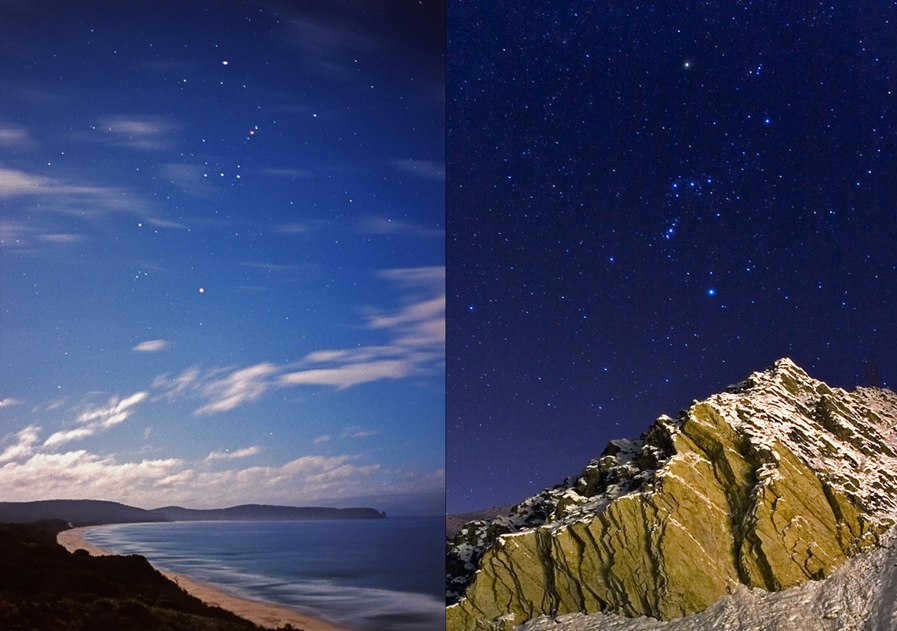
Observing the Orion constellation is a breathtaking experience whether you are by the sea or in the mountains.
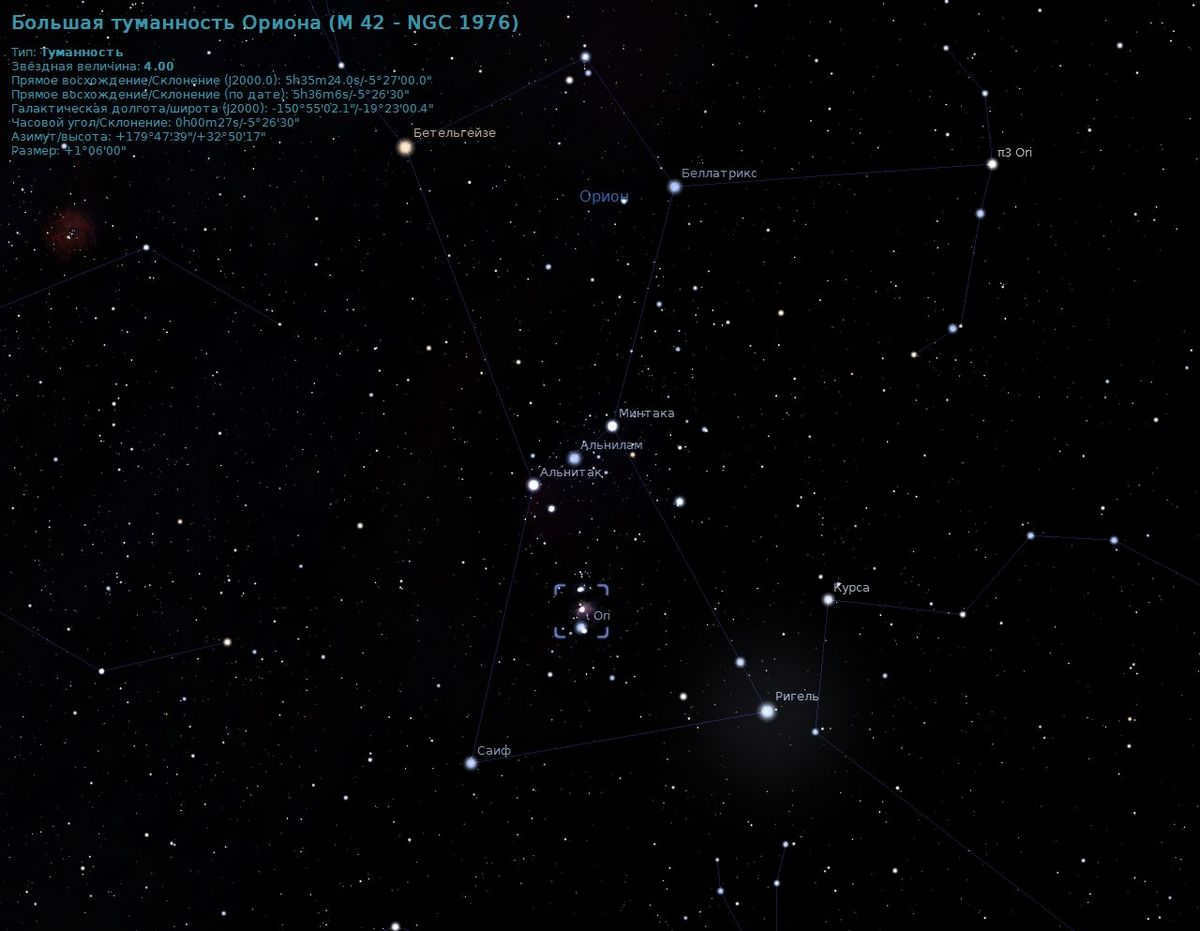
The Stellarium star map showcases the magnificent Great Orion Nebula.
Located amidst the celestial tapestry, the Great Orion Nebula can be effortlessly spotted with the naked eye, situated just below and to the left of the easily recognizable trio of stars known as the belt of Orion. For those residing in Russia, the optimal time to observe this spectacle is during the winter season. During this time, the nebula remains a constant presence in the night sky, positioned at a considerable height above the horizon.
When viewed through an amateur telescope, the nebula presents itself as a diffuse cloud with a distinct gray hue, boasting a well-defined shape. By utilizing an oxygen filter, one can significantly enhance the contrast and unlock a plethora of intricate details.
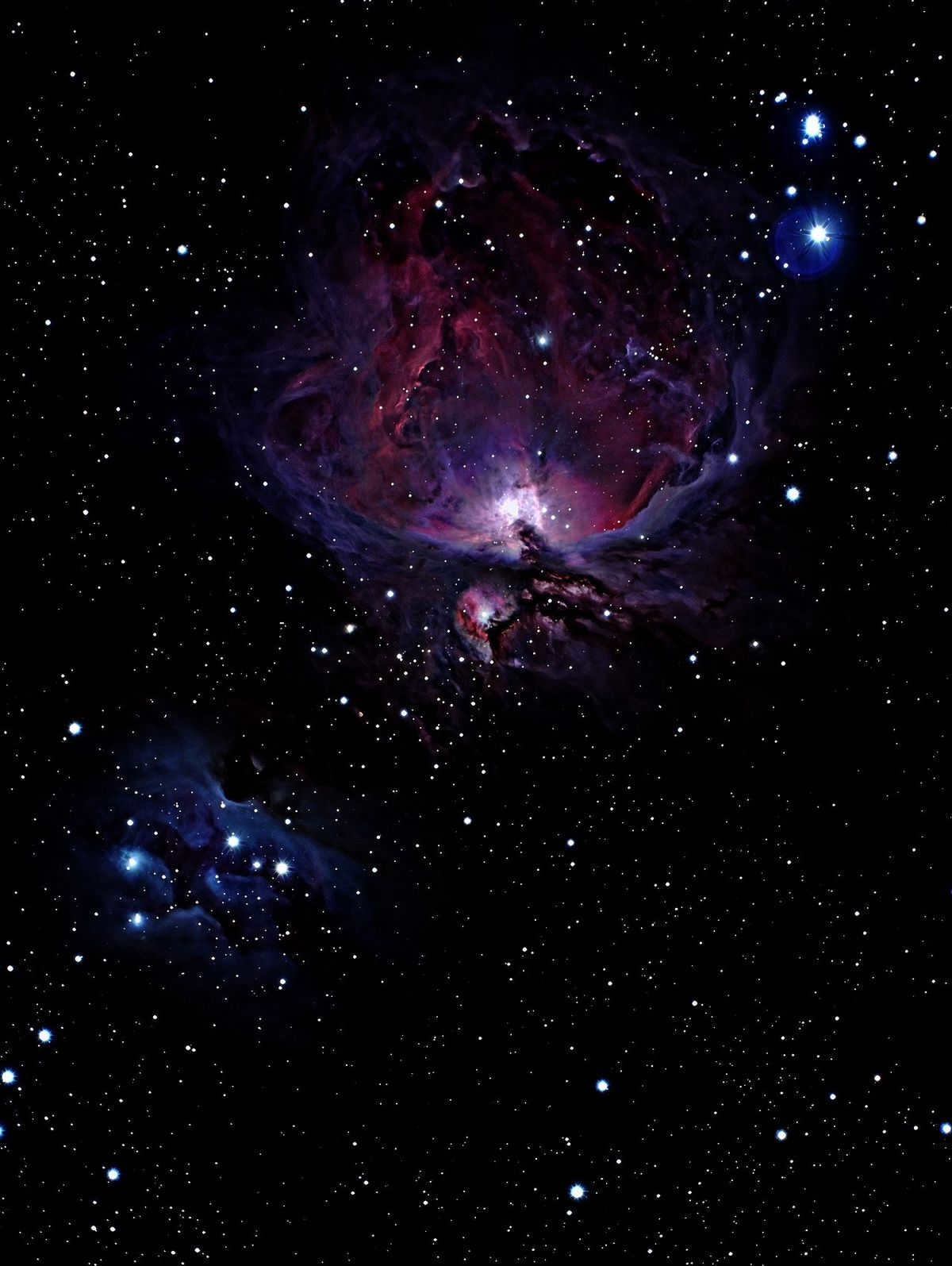
This is a photograph taken by an amateur of the magnificent Orion Nebula.
When using telescopes with a diameter of 300 mm or greater, it is possible to observe the distinct colors of the nebula. The nebula’s brightness and expansive size make it visible even when using binoculars.
What are the techniques for capturing it on camera?
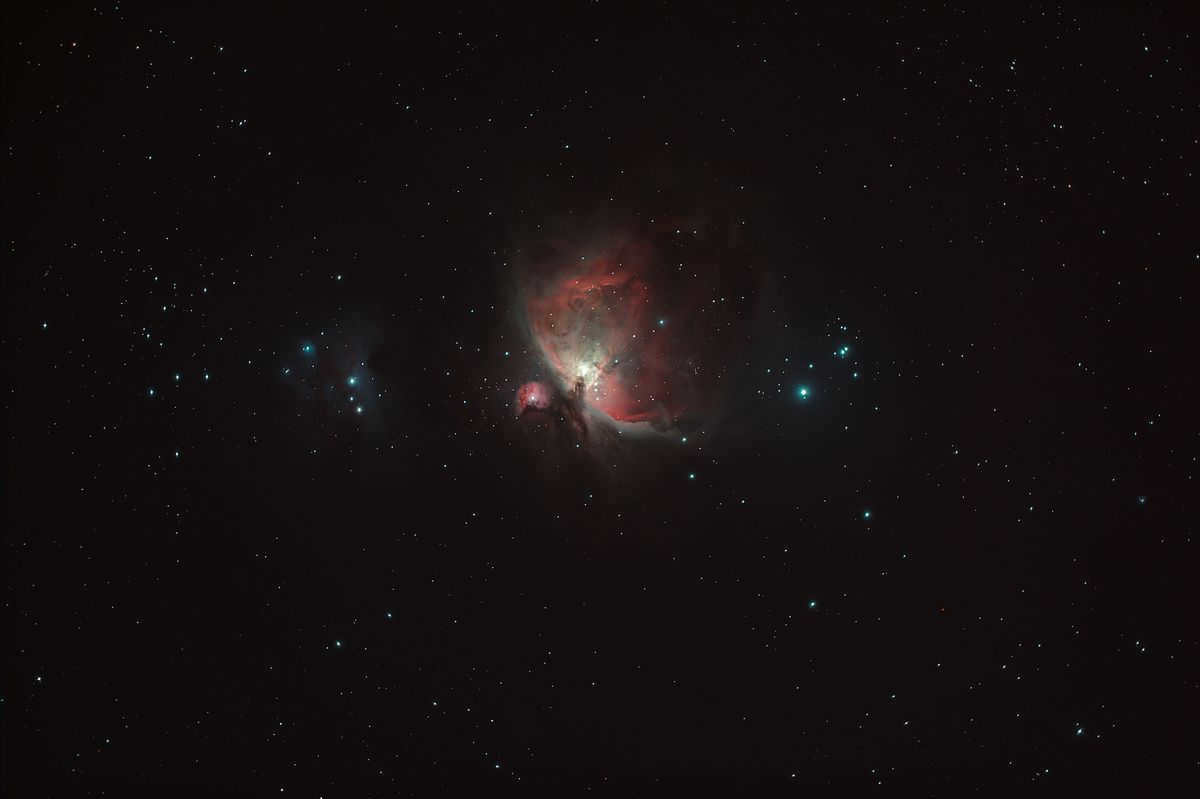
An amateur photograph was taken with a total exposure time of 57 minutes.
The Orion Nebula is a great option for beginners due to its brightness. Even with just a 200-300 mm lens, the nebula can be clearly distinguished in your pictures. However, to achieve significant results, a slow shutter speed is necessary in order to avoid blurring the image. For this purpose, photo mounts like AstroTrac and nanoTrack are suitable options (without having to purchase a telescope with a motorized mount). These mounts allow for long exposure images without any blurring.
By utilizing a novice telescope equipped with hourly steering and guiding to prevent any blurring of the image, it becomes feasible to capture excellent photographs. The clarity of the details within the images improves with longer exposure times, which directly correlates to the shutter speed of the image. Our gallery of nebula photos showcases some stunning examples of these types of shots.
Exploring the Orion Nebula
The Orion Nebula is widely recognized as one of the most well-known nebulae in space. Not only is it an emission nebula, but it also possesses a diffuse nature, making it unique among its counterparts. Additionally, it boasts a remarkable level of brightness, setting it apart from other nebulae.
Interestingly, this celestial body goes by various names, including Messier 42 or M 42 for short, and it is also referred to as NGC 1976.

Nicolas-Claude Fabry de Peyresque was the one who made the discovery of the Great Orion Nebula back in 1610. However, it was H. Huygens who thoroughly studied and described it in 1656.
Despite being situated 1344 light-years away from our planet, M 42 can be easily spotted from almost any location. Its size is almost four times that of the Moon, and the stars in Orion shine very brightly. Hence, finding the nebula is not a difficult task. Of course, one needs to have precise knowledge of its location to do so.
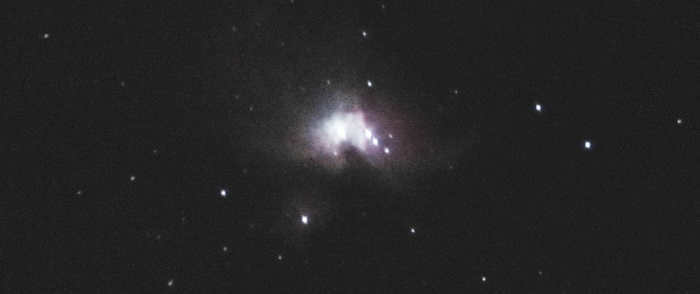
The Orion Nebula seen through a telescope
Characteristics of Orion
Within the nebula, there is active star formation, resulting in the observation of numerous young planetary systems composed of dust and gas.
Scientists believe that the red glow of Orion is caused by hot gas, primarily hydrogen. Conversely, the blue color is the result of dust reflecting light from blue stars. The violet hues are derived from the reflection of radiation emitted by the massive stars at the center. Additionally, M 42 contains molecular clouds.
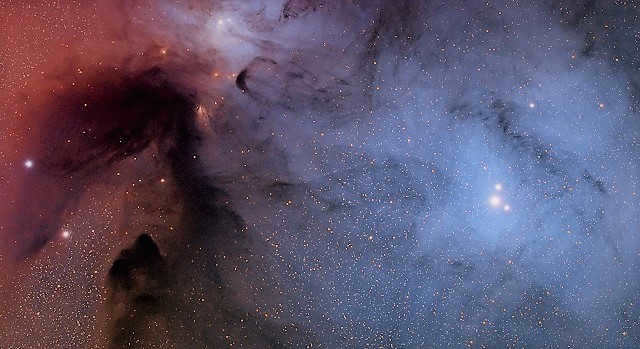
Interstellar molecular clouds.
How to locate a nebula
Therefore, Orion is widely recognized as one of the most prominent features in outer space and one of the most brilliant nebulae. As a result, numerous astronomers, including hobbyists, dedicate significant attention to observing it.
In addition, NGC 1976 possesses an apparent magnitude of 4, making it visible in the sky even without the aid of a telescope.
The answer to the query of when the Orion Nebula becomes visible in the sky is quite straightforward. The optimal period for observing it is during the winter months, preferably at night.
The region referred to as the Sword of Orion offers a favorable perspective for observing M42.
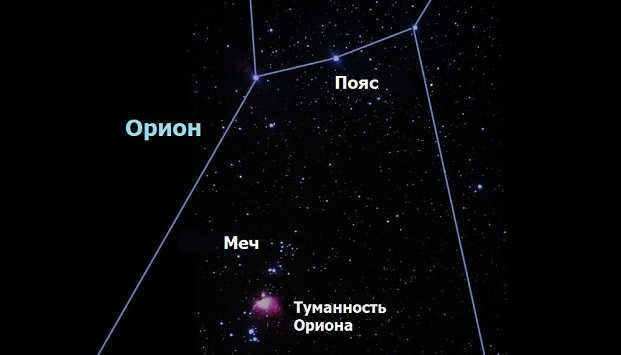
When observed through a telescope, the Orion Nebula appears as a stretched out, luminous cloud. With the use of a high-powered instrument, this shape transforms into a curve resembling a taut bow. Some have even likened it to the form of a bat.
At the core, there is a shining center that diminishes in brightness towards the edges of the nebula’s wings. Through the assistance of the Hubble telescope, scientists have identified a region known as the Trapezium in this central area. It consists of four massive and radiant stars that share a resemblance to their name. Additionally, a protoplanetary disk has been detected within this region. Furthermore, several brown dwarfs have been discovered in the lower section of the nebula.
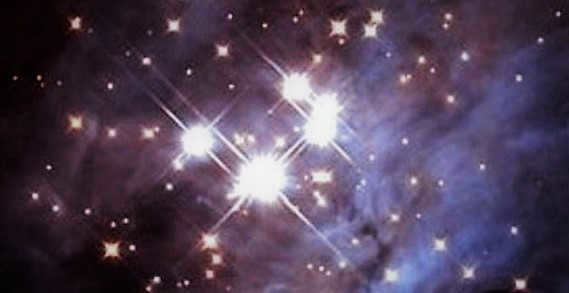

In the sky, there can be seen a group of stars known as Orion’s trapezoid. This pattern consists of four bright stars forming a shape similar to a trapezoid. Moreover, towards the east, there are three stars aligned in a straight line. Another interesting feature is the Fish Mouth, which is the point where the visible wings converge. Additionally, there is a straight striped sword, although it is not easily noticeable.
Lastly, in the western part of the sky, there is a section referred to as the Sail. This area, which is not very bright, surrounds the wings of Orion, resembling an open sail.
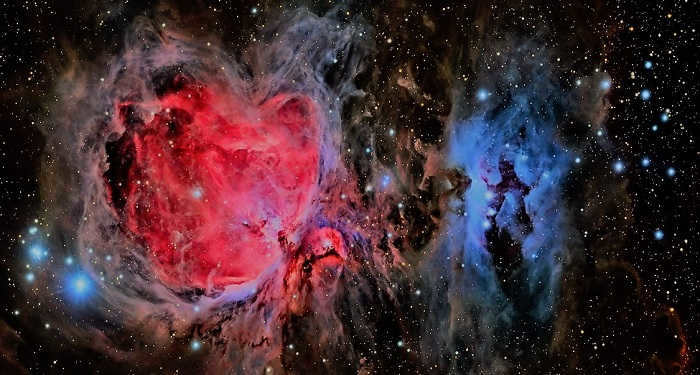
An image showcasing the stunning Orion Nebula.
It is worth noting that the radiant stars of Orion have been referenced by ancient civilizations, including the Maya. Furthermore, renowned scientists like Ptolemy and Galileo Galilei have made observations and references to various celestial objects within the Orion constellation. Notably, the Orion Nebula has indirectly influenced the writings and findings of prominent figures such as Tycho Brahe.
Undeniably, the captivating beauty and excellent visibility of the nebula in the night sky have contributed to its popularity. However, the interest in this extraordinary phenomenon extends beyond mere aesthetic appeal. The extensive study of M 42 has undoubtedly played a significant role in advancing other groundbreaking astronomical discoveries.
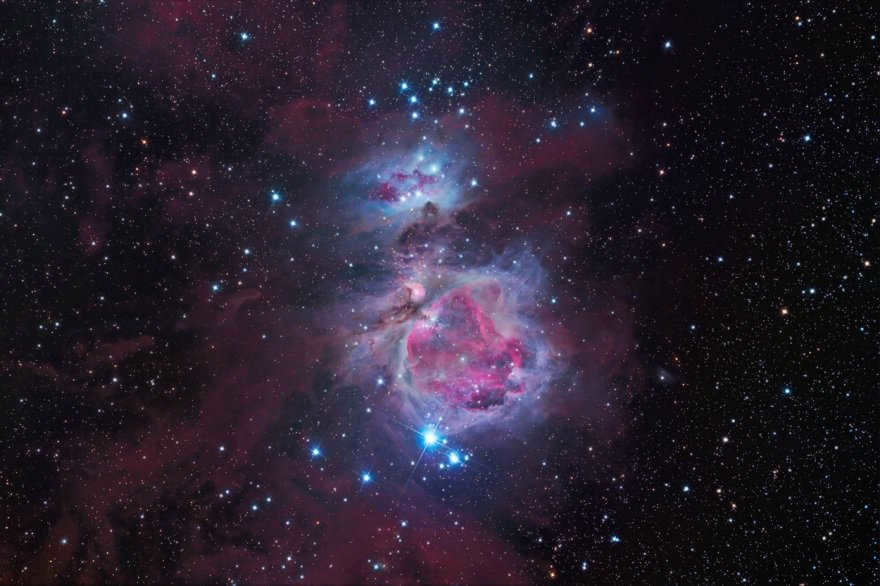
If you want to know how to locate the Orion Nebula (M 42, NGC 1976) in the Orion constellation, you can find a detailed description along with a breathtaking photo taken by the Hubble telescope. This nebula is classified as a luminous emission nebula and is located approximately 1,344 light-years away. It is situated in the Orion constellation and has an apparent magnitude of 4, making it easily visible without the need for any optical aids. The Orion Nebula is one of the brightest nebulae, capturing the attention of astronomers and stargazers alike.
Description of M42 in Messier’s catalog:
On May 3, 1764, a remarkable celestial object known as the nebula M42 was first discovered. This nebula was found in the region between the constellations of the Wolfhound and one of the Hound Dogs of Hevelius, also known as the Hound Dog constellation. What makes this nebula unique is that it does not contain any stars, yet its center emits a brilliant light that gradually fades away. With its round shape, this celestial wonder can be observed using a 1-foot telescope under clear skies. It is worth noting that M42 was also recorded on the map of comets observed in 1779 and mentioned in the Memoirs of the Academy (Mem. Acad.) for the same year. Another observation of M42 took place on March 29, 1781, and it was described as exceptionally beautiful (Diam. 3′).
Observational data and physical characteristics of the Orion Nebula
The Orion Nebula can be found below the Belt of Orion. It can be observed as a blurry star located in the Sword of Orion, which is to the south of the belt. It is possible to see it using binoculars or a small telescope. When looking at it in the night sky, it will appear to be four times larger than the visible Moon. Despite its small size, the instrument is able to distinguish the four brightest stars of the open cluster known as Orion’s Trapezium, which are massive, luminous, and were formed within M 42. The light emitted by these stars illuminates the nebula, and this phenomenon can be observed in a photograph taken by the Hubble Space Telescope.
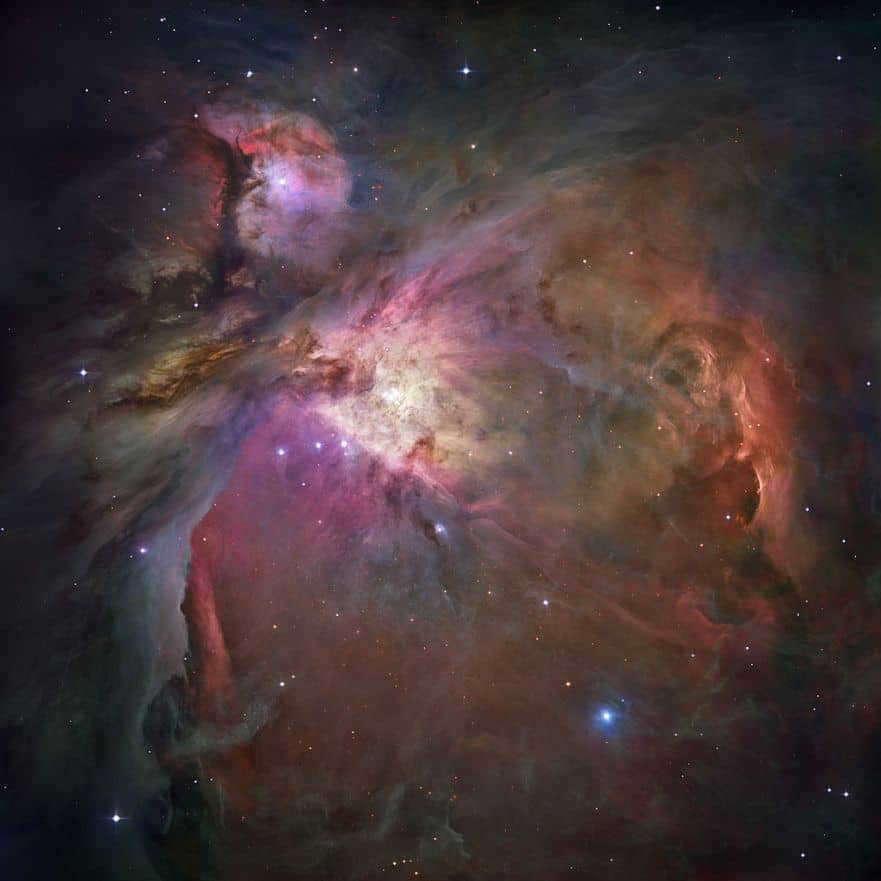
The Orion Nebula has been captured in a new and astounding manner by the Hubble Space Telescope. Within this image lies a portion depicting a turbulent formation of stars. Over 3,000 stars of varying sizes can be seen within the frame, some of which have never before been observed in the visible spectrum. These stars exist within a landscape of dust and gas that bears a striking resemblance to the majestic Grand Canyon. This image of the Orion Nebula, also known as M42, can be thought of as a visual textbook on the process of star formation. Within this image, one can witness the birth of massive young stars, as well as the presence of nebulae and pillars of dense gas that serve as nurturing cradles for nascent celestial objects.
Locating the constellation Orion is an easy task, as it bears a resemblance to the shape of an hourglass. Above and below the hourglass shape, one can find the bright stars Betelgeuse and Rigel. The three stars that form Orion’s belt are known as Alnitak, Alnilam, and Mintaka. The most favorable time for observing the Orion constellation is during the winter season.
M 42 is a popular location for scientific investigation due to its ongoing star formation activity, which provides valuable insights into the birth and evolution of stars. The nebula exhibits a noticeable emergence of new stars, with temperature measurements in the central area reaching 10000 K.
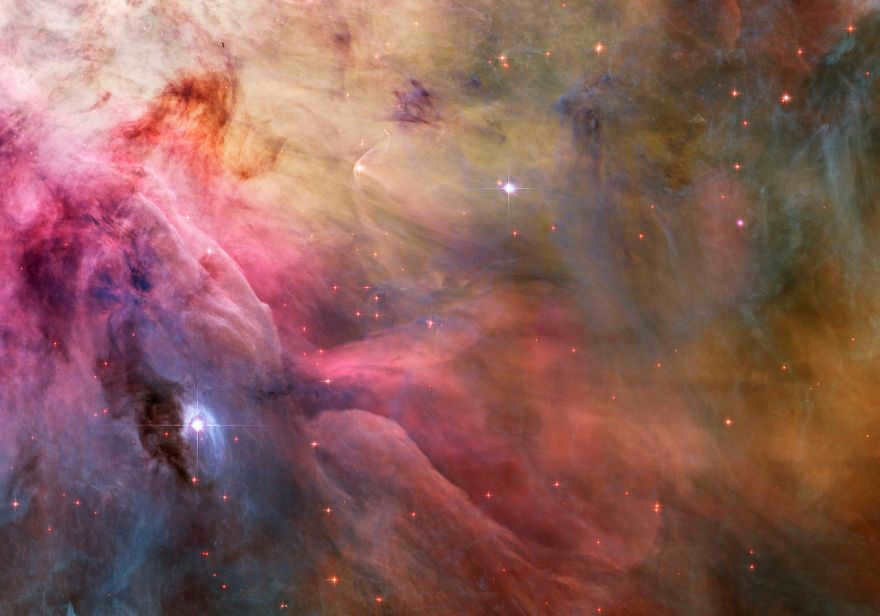
Behold the breathtaking panorama of the Orion Nebula (M42).
The Trapezium cluster’s radiant stars emit ultraviolet light, which warms the surrounding gas and casts a luminous glow upon the nebula. Furthermore, the stellar wind sculpts the nebula into its mesmerizing shape. The majority of the ultraviolet rays originate from Theta 1 of Orion C, the most massive star in the Trapezium. Its spectral type is O6pe V, and its surface temperature marker freezes at a staggering 40000 K.
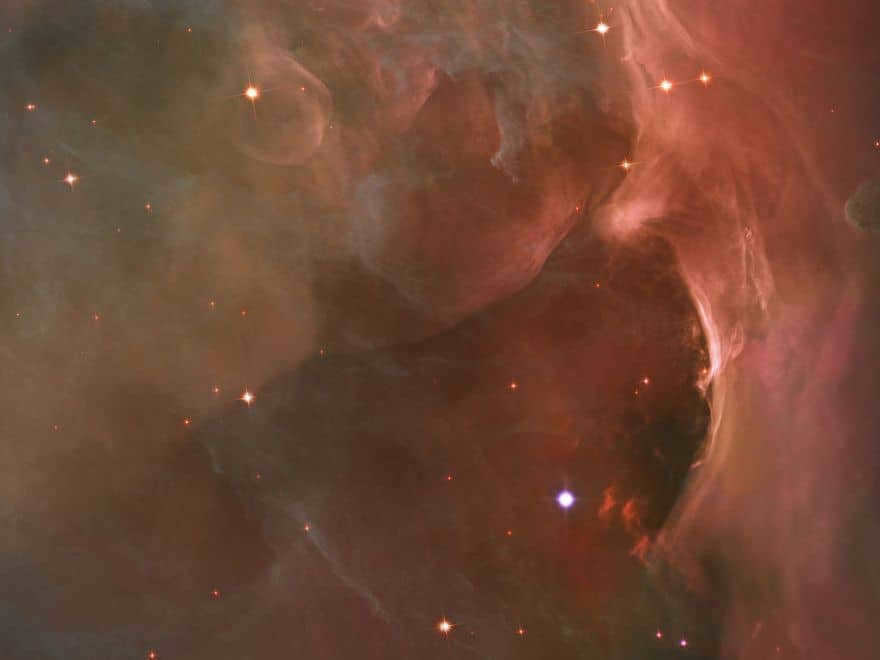

The luminous region displays the formation of bubbles and arcs resulting from the collision of stellar winds (charged particle streams) with material.
Various sections of the Orion Nebula have been given individual names. The Wings are the bright areas on the sides, while the Mouth of the Fish is the dark line extending from the north to the bright area. The Sword is a prominent wing extension to the south, and the Sail is a fainter one to the west. Below the Trapezium cluster, there is a notable bright area called Zasov.
M 42 contains a vast array of youthful stars, some of which have not yet reached the age of one million years, along with protostars that are concealed within gas cocoons. In total, there are 700 stars in various stages of evolution. The youngest stars are less than 300,000 years old, while the oldest are 10,000 years old.
The Hubble telescope managed to capture over 150 protoplanetary disks in an image, which represents the initial phase of system formation.
It is speculated that in another 100,000 years, a significant portion of the Orion Nebula will dissipate, leaving behind a vibrant and youthful cluster that is surrounded by remnants.
Being a luminous entity, numerous ancient civilizations were aware of its presence. The M 42 nebula has been referenced in ancient texts, such as the Mayan creation myth, where it symbolized glowing embers.
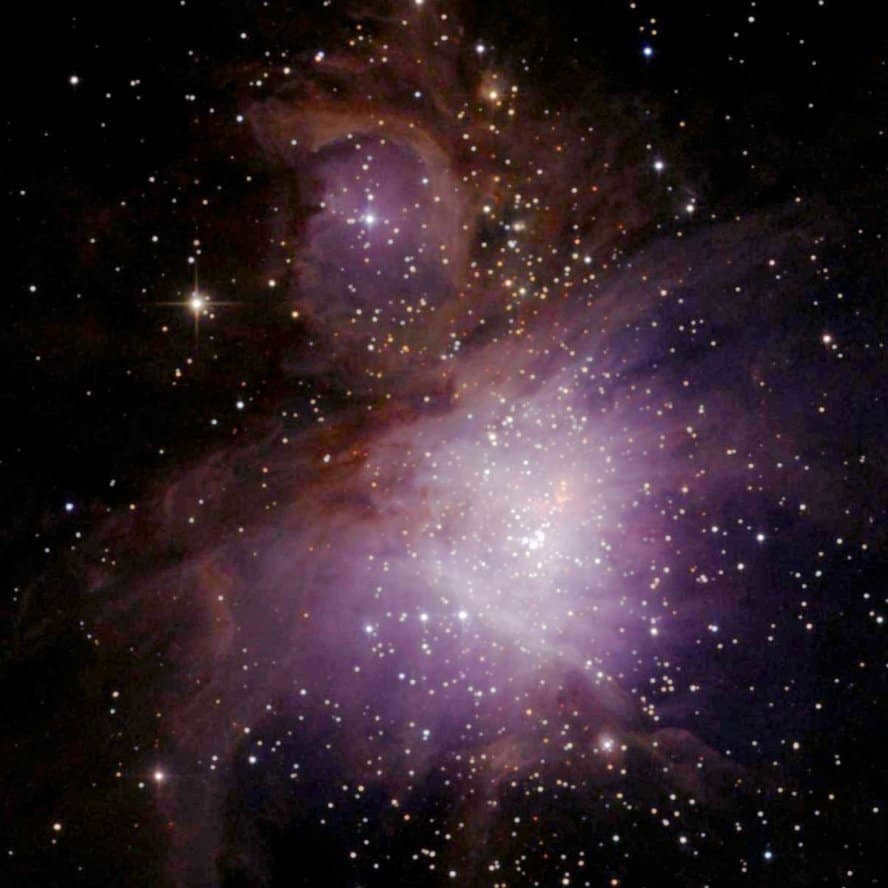
A picture of M42, produced during the 2MASS project
The nebula was not mentioned by Ptolemy or Galileo, despite their observations of the stars and other celestial objects. Ptolemy, for instance, only observed one bright star within M 42 in 130 AD. This observation was also noted by Tycho Brahe in the late 16th century and Johann Bayer in 1603, who referred to it as Theta of Orion. Galileo, in 1610, observed three bright stars but did not identify the nebula surrounding them.
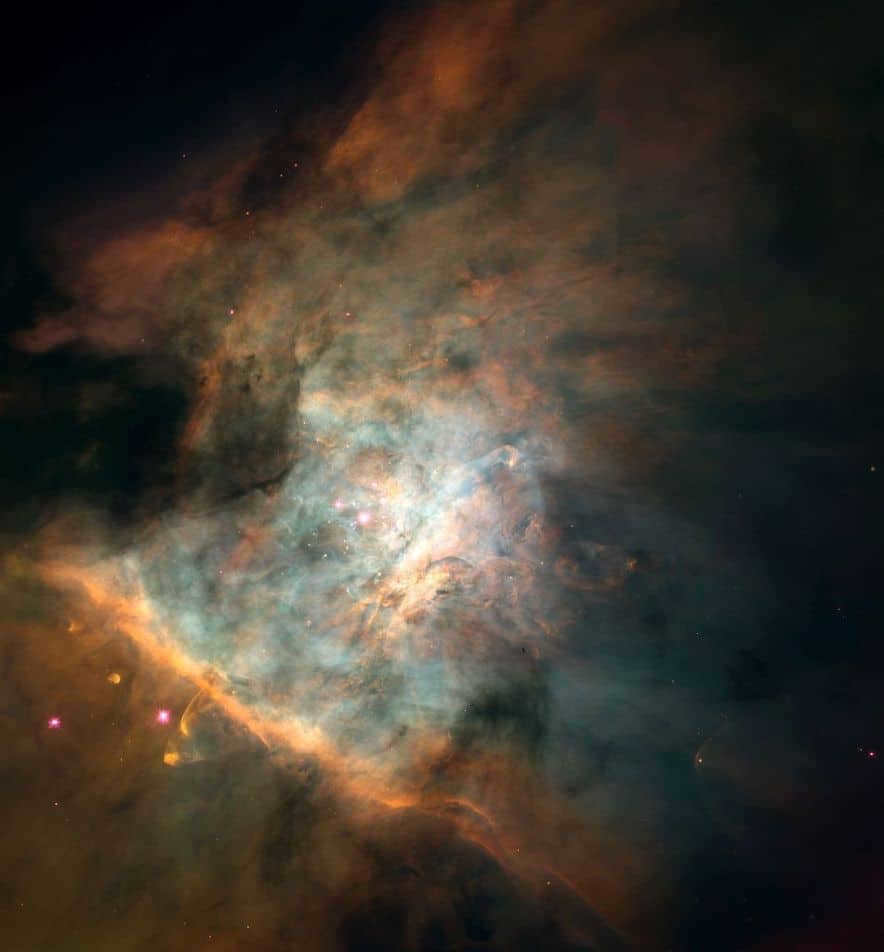
The true color depiction of the Orion Nebula
Cisat was the initial to provide a brief portrayal of the Trapezium in Orion, observing that the central stars were arranged in a rectangular shape. However, the credit for the discovery is still given to Galileo Galilei, who identified the three stars on February 4, 1617.
Giovanni Gaudierna, on the other hand, was the first to illustrate the nebula, showcasing the three stars from Orion’s Trapezium.
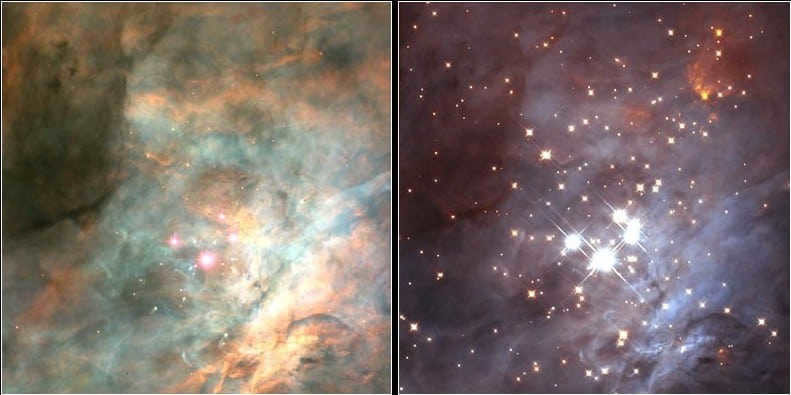

Two perspectives of Orion’s Trapezium captured by Hubble. The image on the left exhibits the stars shrouded in burning gas and dust. On the right, an infrared image penetrates through the haze, capturing stars and brown dwarfs.
Interestingly, Messier distinguished the northeastern section of the nebula as a distinct entity, M 43.
To the north of M 42, there are a number of dim nebulae: NGC 1973, NGC 1975, and NGC 1977. These nebulae partially reflect the light emitted by the Orion Nebula. The discovery of the latter was credited to William Herschel, while Heinrich D’Arré is attributed with the discovery of the former two.
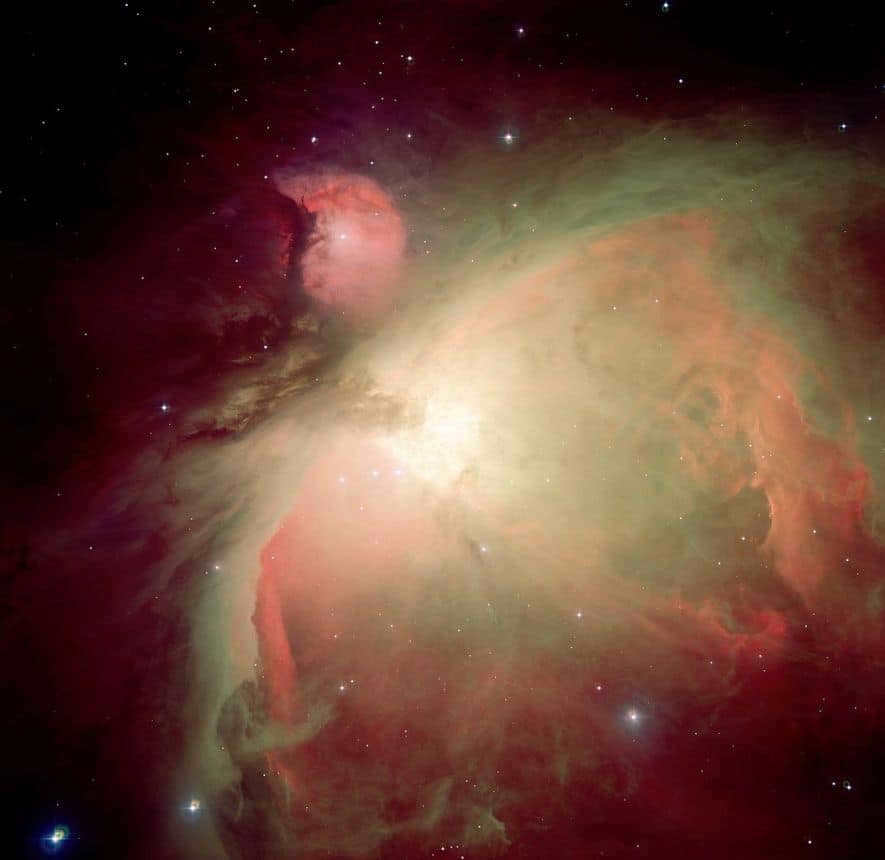

The astonishing Orion Nebula, photographed by the 2.2-meter telescope of the European Southern Observatory
John Herschel documented the Orion Nebula as h 360, and later recorded it in the General Catalog – GC 1179.
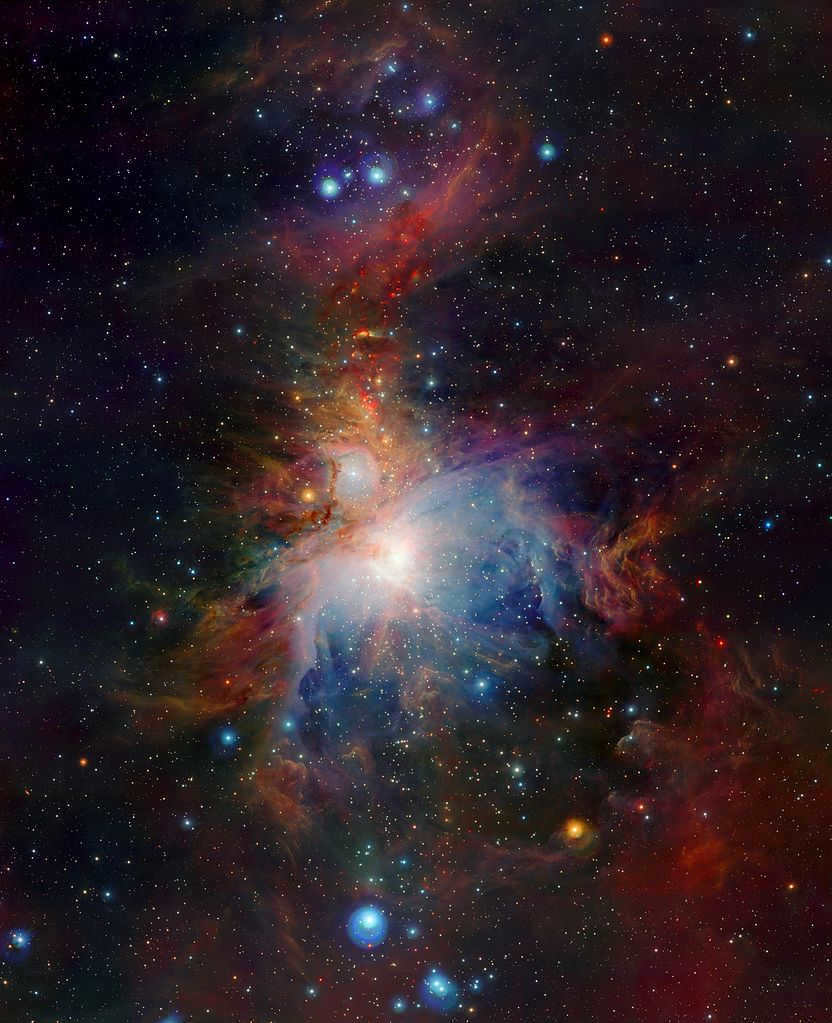
M 42 was the initial nebula to be captured in a photograph. This event occurred on September 30, 1880, courtesy of Henry Draper utilizing an 11-inch refractor and a groundbreaking dry-plate technique.
The intricacies were resolved in Andrew Common’s visuals in 1883. He too employed dry plates and a 36-inch reflector. The duration of the exposure was one hour.
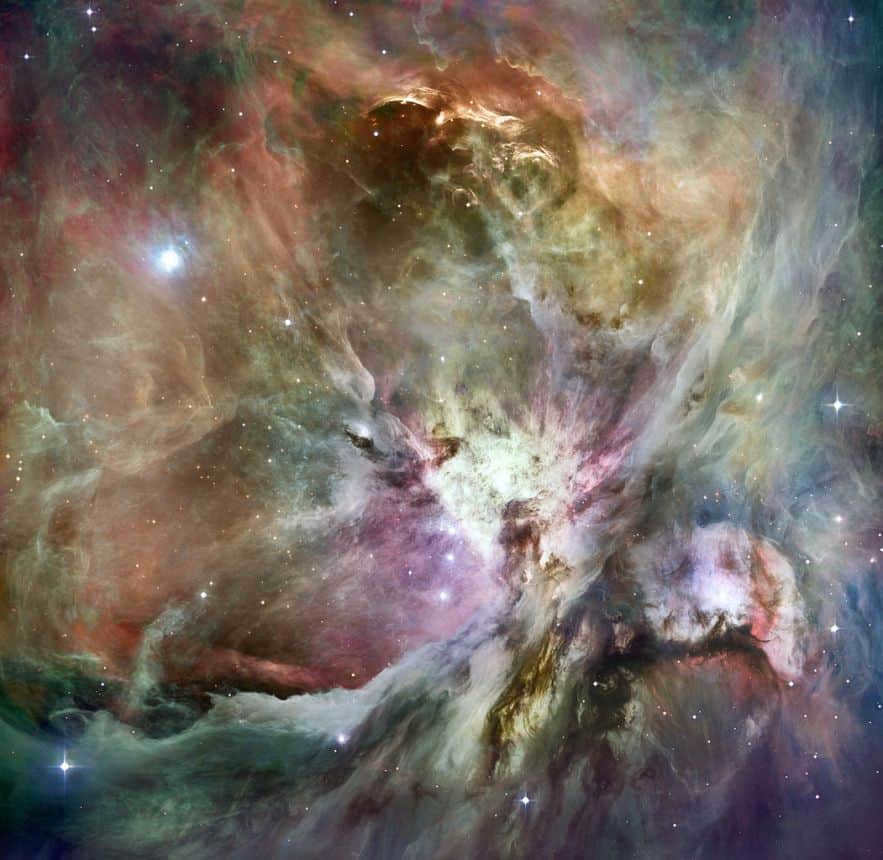

Behold the stunning combination of images captured by the Hubble and Spitzer telescopes, showcasing the ethereal wonders of the Orion Nebula.
The appellation “Orion’s Trapezium” was bestowed upon this celestial cluster by the esteemed Robert Trumpler, who astutely calculated its location to be 1,800 light-years away. The pioneering images of this nebula were first captured by the Hubble telescope in 1993. Dive into the intricacies of the Hubble photo of the Orion Nebula (M 42) or explore our array of telescopes and immersive 3D models online, revealing the splendor of stars in galaxies and constellations. A star map that transcends all seasons will aid you in your quest.
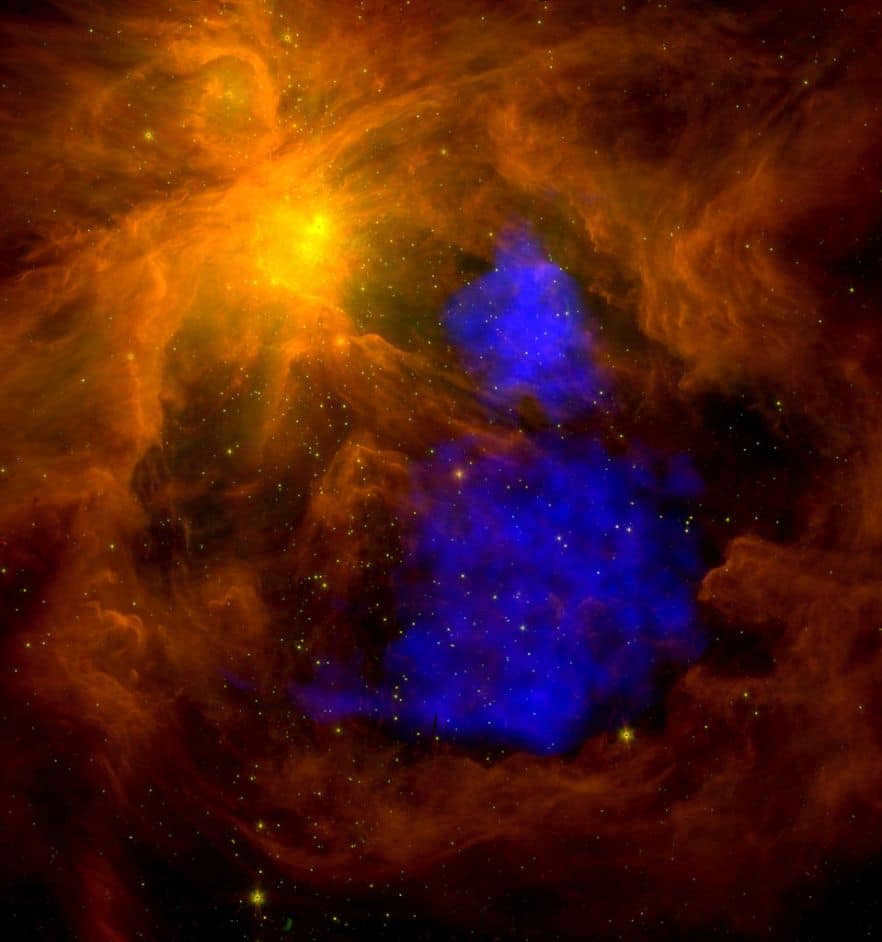
Spitzer infrared observation of M42 with XMM-Newton X-ray data (blue) captured in an image
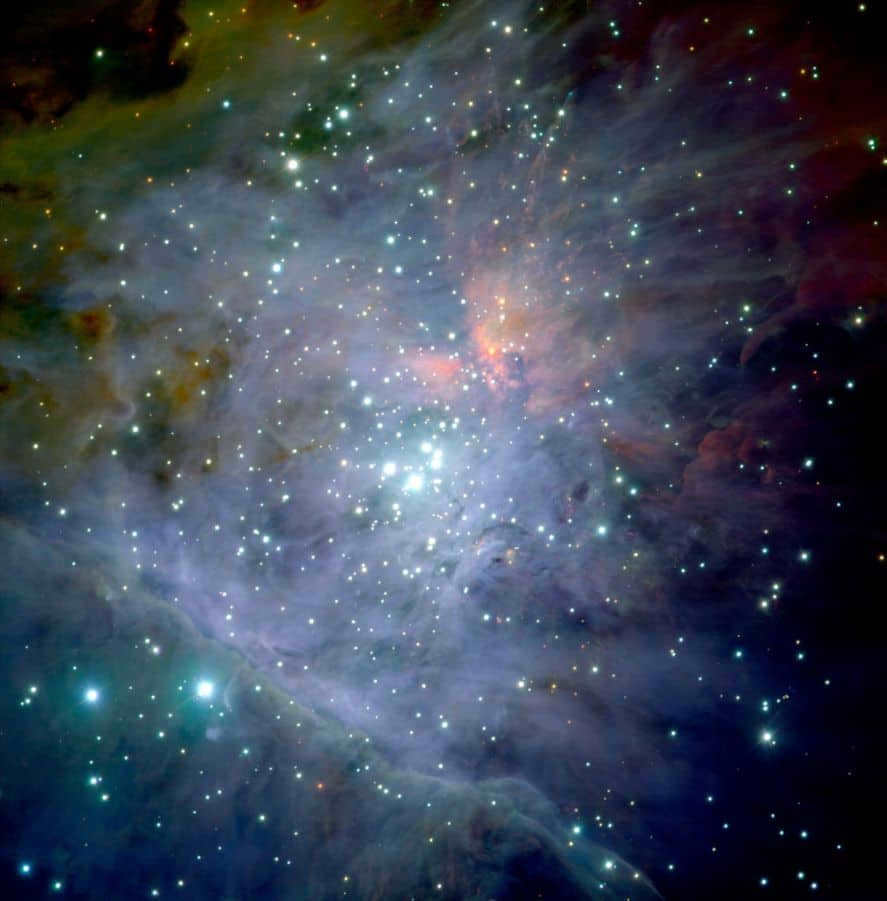

The Very Large Telescope has captured a color composition of the central part of M42. A combination of 81 images was used for this image. The stars of Orion’s Trapezium can be seen in the center, along with the cluster itself, which contains thousands of stars that are up to one million years old.
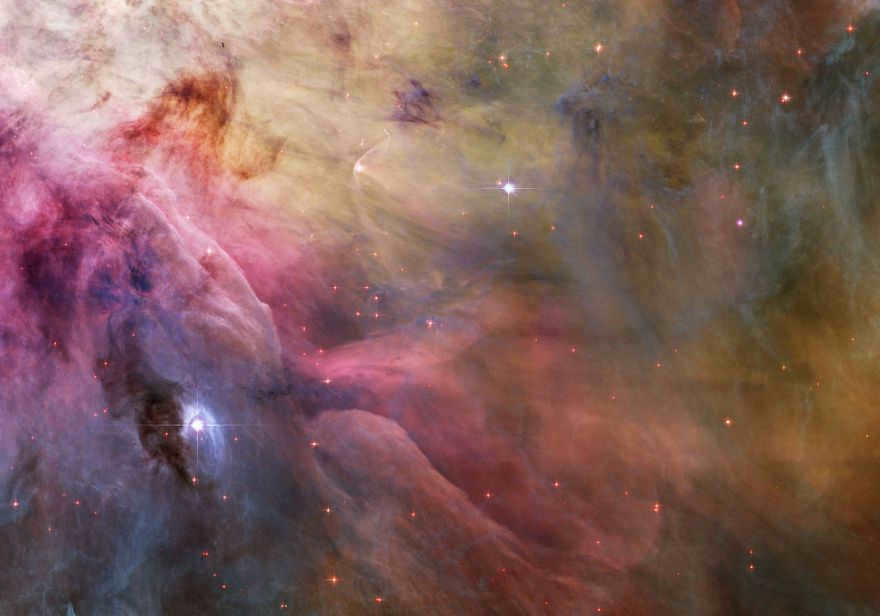
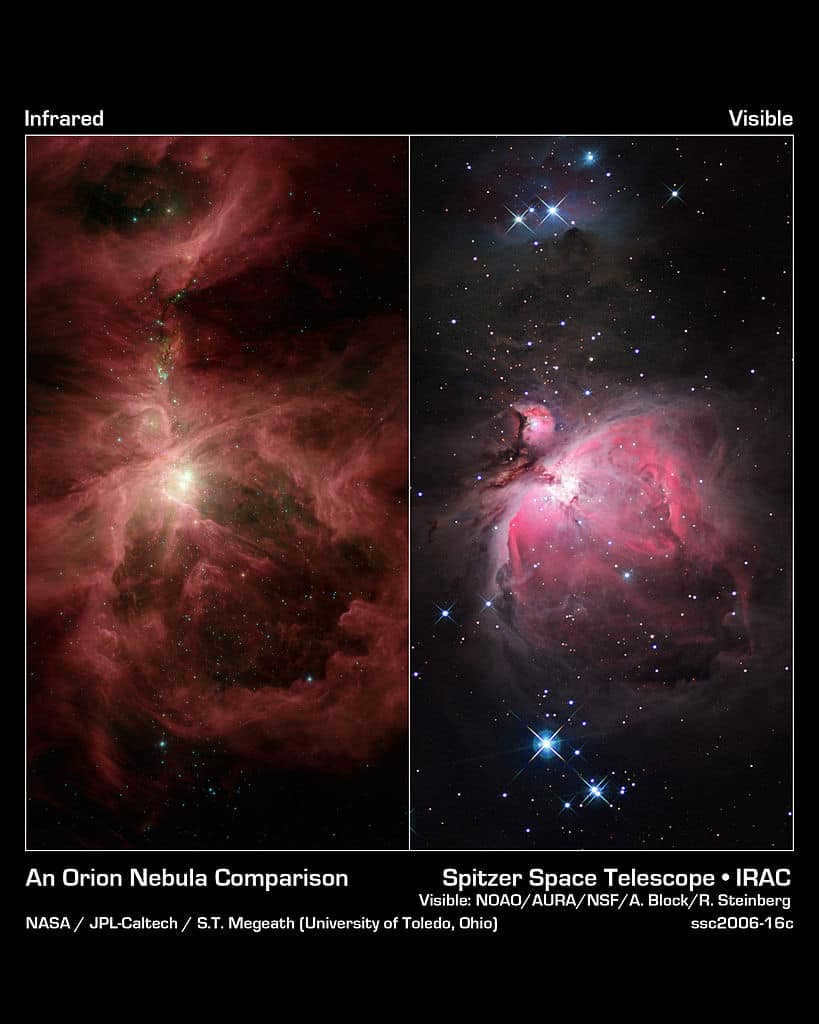
A unique composite image has been created using both infrared and visible observations of M42, a stellar region located near Mecha. The infrared image was captured by the Spitzer telescope, while the visible image was taken by the National Optical Astronomy Observatory in Arizona. M42 can be seen in the lower half of the image, with M43 visible in the upper left corner and NGC 1977 in the middle at the top. Both M43 and NGC 1977 are distinguished by dust rings that are particularly prominent in the infrared spectrum, a result of the stellar winds they generate. The visible observation showcases gas that has been heated by ultraviolet light. Above the nebula, the area appears dark as the massive stars have not yet begun to eject dust. However, in the infrared light, swirling clouds and evolving stars can be observed, with jets of gas being expelled (represented by the color green).
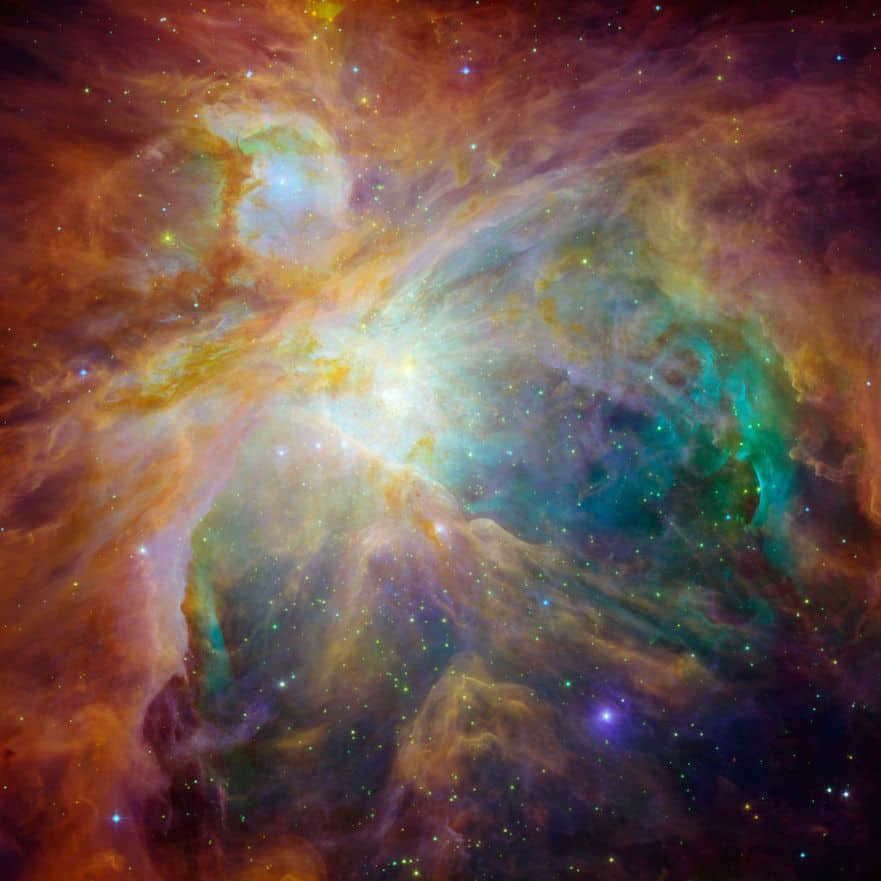
The innate curiosity of human beings to explore the vast expanse of the universe is an inherent characteristic of mankind. It captivates us with its boundless beauty and enigma. Of particular fascination are the nebulae, which are the most exquisite entities in the celestial sphere. Composed of cosmic dust, gas, and plasma, these nebulae possess the ability to absorb or emit light. They serve a crucial purpose in fostering the life cycle of stars. Among the myriad of nebulae, the Orion Nebula, also known as M42, stands out as an exceptionally stunning and distinctive phenomenon.

Distinctive Features of the Object
The Orion Nebula is the most luminous nebula in existence. It is observable at nighttime without the need for specialized equipment and can be spotted from virtually any location on the planet. It belongs to the diffuse category.
The crimson-colored sections of the nebula are formed by hot hydrogen, while the blue regions are a result of dust reflecting the radiance of blue-colored stars. The green areas arise from the presence of specific chemical elements, while the violet portions are a reflection of radiation emitted by the massive stars situated at the core of the nebula. This celestial body contains a plethora of stars, as well as dust and gas. Researchers have identified 700 stars within the nebula, which can be observed in photographs captured using advanced tools such as the Hubble telescope.
Location
The nebula can be found just below the three stars that make up Orion’s belt. Situated at a distance of 1300 light years from Earth, M42 is known for its cocoon-like shape, within which countless stars are born. Adjacent to M42 is M43, which takes the form of a circular structure and is separated from M42 by a dark band of dust. On the left side, one can observe a dust cloud that reflects the light emitted by the stars.
Composition
M42 is classified as a diffuse nebula, lacking an independent energy source like stars. The luminosity within it is a result of the presence of hot stars either within or in close proximity to it. The Great Orion Nebula consists of matter that did not form these stars.
The predominant red coloration of M42 is attributed to the abundance of hydrogen present. The blue and green hues indicate the existence of other elements such as helium, nitrogen, heavy metals, sulfur, and oxygen.
Located at the core of M42 are four blue stars that create a trapezoidal configuration. Each star emits light, which is absorbed and reflected by the surrounding space, resulting in unique colors.
Within M42, dust clouds form intricate fibrous structures, as well as formations resembling leaves and bubbles. The dynamic stellar winds alter the appearance of the surrounding clouds, causing them to take on curved shapes.

- Hydrogen that has been ionized;
- Oxygen;
- Sulfur;
- Nitrogen;
- Metals that are heavy;
- Helium.
Formation of M42
M42 was formed due to the effects of gravitational collapse on particles of the interstellar medium. Under the influence of gravity, matter began to come together and form regions of high density. Stars began to form at its center, and the ultraviolet light emitted by these stars interacts with the surrounding gas and dust particles, giving rise to the appearance of a nebula.
Ongoing research
In order to fully observe the space object, scientists require specialized equipment that allows them to view different wavelengths of light. Consequently, the M42 nebula was observed using the APEX telescope, which is equipped with a submillimeter camera situated at an altitude of 5,000 meters above sea level.
Situated in Chile, the APEX telescope enables scientists to observe the contents of the nebula, including the gas and dust clouds, as well as what lies beyond them, thus facilitating the study of star formation processes.
Based on their observations, the scientists have determined that there are two distinct clusters of stars within the M42 nebula, which exist as separate entities. These clusters are composed of approximately 2,000 stars. Additionally, this research has led to the discovery of another cosmic cloud consisting of molecular hydrogen.
Research conducted using the infrared spectrum has revealed that the presence of dust surrounding the Orion Nebula has a dampening effect on the luminosity of the stars within it.
The utilization of an infrared telescope enables astronomers to monitor the stars and monitor any fluctuations in their brightness. The radiation emitted by the stars, as well as the impact of stellar winds, contribute to the formation and structure of the nebula. This particular type of telescope facilitates a more comprehensive analysis of celestial objects.
The Orion Nebula, also referred to as Messier 42, M 42, or NGC 1976, is a brilliant emission nebula situated below the Belt of Orion. It is the most prominent diffuse nebula, covering an area of approximately 80 x 60 angular minutes, which is more than four times the size of the full Moon. With a luminosity equivalent to about 4 star magnitudes, the Orion Nebula is easily visible in the night sky and can be observed with the naked eye. Its location on the celestial equator allows for its visibility from nearly any location on Earth. The distance between Earth and M 42 is estimated to be around 1,344 light-years, and it spans across a width of 33 light-years.
A dark strip of dust traverses the northern portion of M 42, dividing its northeastern segment, known as M 43, from the main body of the nebula.
Several sources mistakenly credit the discovery of the Orion Nebula to the German astronomer I. Cisatu [3], while other sources claim it was actually discovered by the French astronomer Nicolas-Claude Fabry de Pereisky.
The nebula was initially documented in 1656 by H. Huygens.
Fascinating items
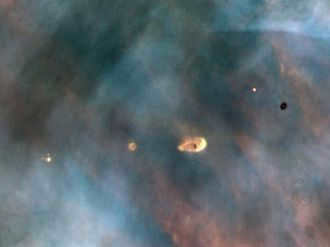
Scientists at NASA have made a groundbreaking discovery using the Hubble orbiting telescope. They have found a protoplanetary disk in the Trapezium region, which is situated at the heart of the nebula. The Trapezium region derives its name from the unique arrangement of four massive stars, forming a trapezoid shape. Interestingly, there are also numerous brown dwarfs located in the lower section of M 42.

